
By Trevor W. Lewis and M. Ankith Reddy
NET-ZERO CLIMATE-CONTROL
POLICIES WILL FAIL THE FARM

NET-ZERO CLIMATE-CONTROL
POLICIES WILL FAIL THE FARM
By Trevor W. Lewis and M. Ankith Reddy
February 7, 2024

1
THE ECONOMIC RESEARCH CENTER AT THE BUCKEYE INSTITUTE
TABLE OF CONTENTS
Executive Summary
2
Introduction
6
Lessons from Around the World
9
Europe: High Prices for Energy, Manufacturing, and Food
Sri Lanka: Fertilizer or Famine
America’s Net-Zero Experiment: Dire Economic
Consequences
17
Impacts of Cutting U.S. Oil and Gas Supplies
Choking Off Chemicals’ Feedstock
Green New Deal Can’t Power Farms
Environmental, Social, Governance Reporting
Requirements: Making Food More Expensive
25
Quantifying Carbon Costs of Environmental, Social,
Governance: The Methodology
27
Quantifying Carbon Costs of Environmental, Social,
Governance: The Results
32
Recommendations for Avoiding the Failure of Net-
Zero Policies
39
Conclusion
43
About the Authors
44

2
THE ECONOMIC RESEARCH CENTER AT THE BUCKEYE INSTITUTE
EXECUTIVE SUMMARY
Federal policymakers are pursuing expensive climate-control and emissions
policies that have largely failed in Europe—and the American farm and household
will be required to pay for them. President Trump withdrew the United States from
the ideological Paris Climate Accords that burden U.S. industry with strident
carbon emissions reduction efforts theoretically designed to reach unreachable
emissions objectives. President Biden rejoined the accords on his first day in office,
and his administration has pursued a quixotic goal of “net-zero” carbon emissions
by regulation and legislation ever since. After recommitting the United States to
the net-zero climate-control agenda, the president and Congress revived
significant misguided features of the once-failed “Green New Deal” through the
Inflation Reduction Act. Then, the Biden administration used executive power to
restrict oil and natural gas supply, make chemical feedstocks more expensive to
buy and produce, and enlisted the Securities Exchange Commission to require new
“environmental, social, governance” or ESG reports to track carbon emissions
from farm to table. These federal initiatives and requirements will prove expensive
and economically destructive here—just as they have been in Europe.
To better appreciate the true costs that American farms and households will likely
pay for the Biden administration’s net-zero policies and objectives, The Buckeye
Institute’s Economic Research Center developed a model corn farm that must play
by the government’s new carbon emissions rules. The farm’s operational costs, as
expected, all rose significantly. Diesel fuel needed for trucks, tractors, and
combines became more expensive. As did propane needed to power grain dryers
and heat barns. And prices for the nitrogen fertilizer needed to grow crops rose,
too. The economic model then traced how those additional operating costs affected
food prices for the American consumer. Once again, prices rose to compensate
farmers for the government’s actions. The results are predictable and unsurprising,
but many U.S. policymakers seem unwilling to address or even acknowledge them.
That has to change, or the United States will face dire economic consequences
instead.

3
THE ECONOMIC RESEARCH CENTER AT THE BUCKEYE INSTITUTE
Complying with net-zero emissions policies and corporate ESG reporting
requirements will increase prices of farm inputs, the costs of which will ultimately
be passed onto consumers at grocery stores and restaurants.
1
Farmers will see costs
rise by at least 34 percent.
Farm Operating Expenses Under ESG
Pricing in food’s carbon emissions will increase an American family of four’s
household grocery bills $1,330 per year.
Increase in Annual Grocery Bills
1
Emily Joner and Michael A. Toman, Agricultural Greenhouse Gas Emissions 101, Resources
for the Future, September 8, 2023.
$192,000 Current Costs
$257,000, 34% Increase in Annual
Farm Operating Expenses Due to Carbon Pricing
$0 $50,000 $100,000 $150,000 $200,000 $250,000 $300,000
$8,320, Current Annual
Grocery Bills
$9,650, 15% Increase In Annual Grocery
Bills Due to Carbon Pricing
$0 $2,000 $4,000 $6,000 $8,000 $10,000 $12,000
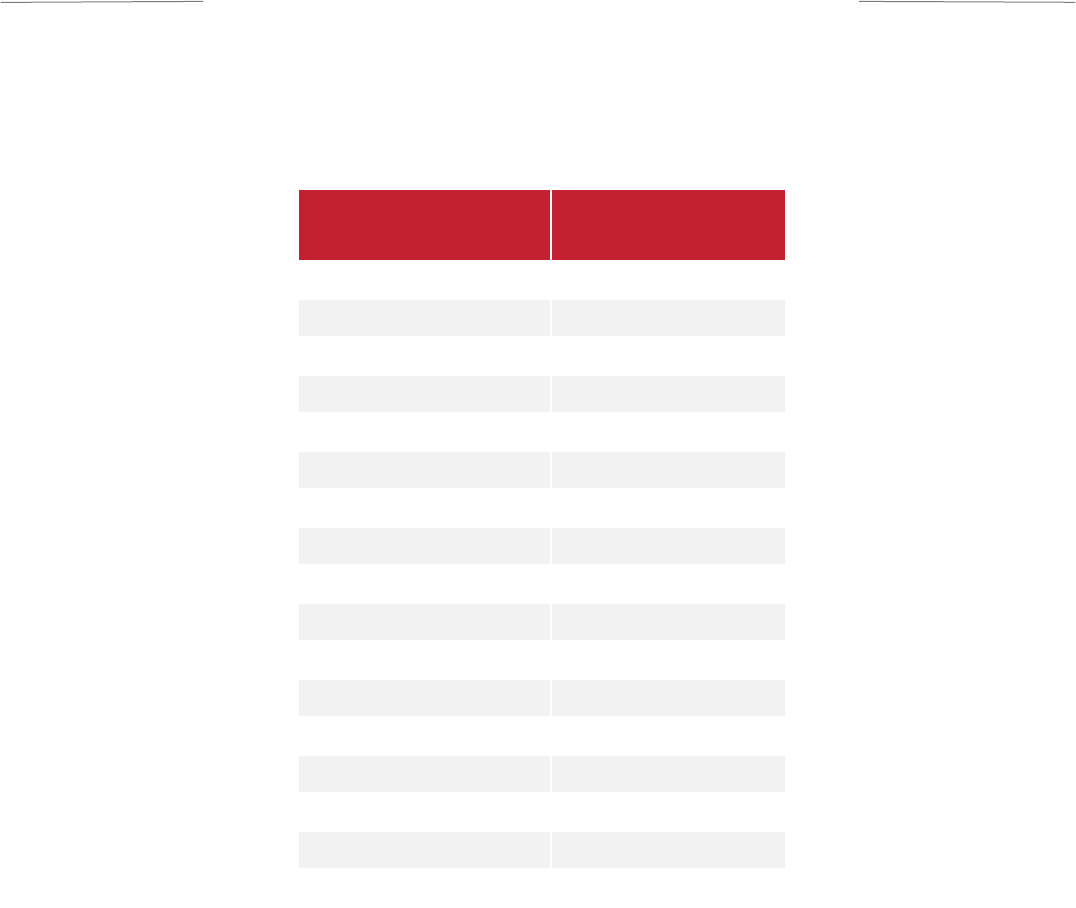
4
THE ECONOMIC RESEARCH CENTER AT THE BUCKEYE INSTITUTE
Carbon emission intensive foods like cheese and beef could increase more than 70
percent per pound.
Price Increases of U.S. Groceries
Item
Percent Increase
American Cheese
78%
Bananas
59%
Beef
70%
Bread
7%
Butter
24%
Chicken
39%
Coffee
13%
Dozen Eggs
36%
Flour
32%
Milk
9%
Oranges
3%
Pork
28%
Potatoes
22%
Rice
56%
Spaghetti
13%
Strawberries
47%
Sugar
43%
Corrective action can be taken at every level. President Biden is unlikely to
decommit the U.S. from the Paris Climate Accords he just rejoined, but the next
president can and should. Republicans in Congress can pursue meaningful
bipartisan collaboration with Democrats from energy-producing and agricultural
states to tap the brakes on runaway spending and net-zero regulations. State
legislatures can limit some of the ill effects of ESG-minded activists by ensuring
fair insurance and lending practices for businesses and farms. And U.S.
shareholders can vigilantly hold corporate leaders and boards accountable for poor
ESG-guided investment decisions and mandates that needlessly raise producer
costs and consumer prices. Without taking remedial steps to fix the problems being
perpetrated by international agreements and federal climate-control rules, the

5
THE ECONOMIC RESEARCH CENTER AT THE BUCKEYE INSTITUTE
American economy, businesses, farms, and consumers will pay the price, and that
price must be understood.

6
THE ECONOMIC RESEARCH CENTER AT THE BUCKEYE INSTITUTE
INTRODUCTION
On President Joe Biden’s first day in office, he recommitted the United States to
the Paris Climate Accords,
2
a binding international agreement that has had
devastating economic effects in Europe that will soon be replicated in America.
3
The agreement, first signed by the United States in 2016, targets “net-zero”
greenhouse gas (GHG) emissions, defined by the United Nations as “cutting
greenhouse gas emissions to zero or as close to zero as possible, with any remaining
emissions re-absorbed from the atmosphere.”
4
To achieve that target, the Biden
administration agreed to reduce America’s emissions by 50-52 percent by 2030
and to reach economy-wide net-zero GHG by 2050.
5
Achieving the
administration’s desired decarbonized economy will require aggressive climate-
emission reduction policies that drain and replace fossil fuels from every sector of
the U.S. economy. The Biden administration has already begun implementing
stringent regulatory policies designed to dramatically reduce carbon dioxide (CO
2
)
emissions from the oil, natural gas, and chemicals industries, and the
administration’s looming rule on “environmental, social, governance” (ESG)
reporting threatens to force carbon compliance onto every other emission-
intensive industry. Contrary to assurances from the U.S. Security and Exchange
Commission (SEC),
6
American agriculture, which accounts for 10 percent of
America’s total CO
2
emissions, will not be spared. Farmers and ranchers will need
to reduce their emissions by adopting “climate smart agricultural practices
(including, for example, cover crops), reforestation, rotational grazing, and
nutrient management practices.”
7
Compliance with these policies will be
monitored by ESG’s new statutory carbon emissions reporting requirements.
These policies and mandates have costs and benefits that have not been thoroughly
examined or understood and that oversight needs correcting.
Ostensibly to curb rampant inflation following the pandemic lockdowns, Congress
and the Biden administration worked together to enact the Inflation Reduction Act
2
The United States Officially Rejoins the Paris Agreement, press statement from Secretary
Antony J. Blinken, U.S. Department of State, February 19, 2021.
3
The Paris Agreement, United Nations Climate Action (Last visited November 2, 2023).
4
What is Net Zero?, United Nations Climate Action (Last visited November 2, 2023).
5
The White House, Fact Sheet: President Biden Sets 2030 Greenhouse Gas Pollution
Reduction Target Aimed at Creating Good-Paying Union Jobs and Securing U.S.
Leadership on Clean Energy Technologies, April 22, 2021.
6
Mark Segal, SEC Chair Says Climate Disclosure Rule Feedback Pushes Back on Scope 3
Reporting as Less Developed, Unreliable, ESG today, September 28, 2023.
7
Nationally Determined Contribution: Reducing Greenhouse Gases in the United
States: A 2030 Emissions Target, unfccc.int, April 15, 2021.

7
THE ECONOMIC RESEARCH CENTER AT THE BUCKEYE INSTITUTE
of 2022 (IRA)—deceptively named legislation that includes much of the regulatory
regime necessary for reaching the Paris Climate Accords’ net-zero emissions goals.
The IRA contains massive federal subsidies for the progressive environmental
agenda over the next 10 years,
8
effectively reviving the failed “Green New Deal”
(GND) introduced by Rep. Alexandria Ocasio-Cortez in 2019. The GND had
proposed a 10-year plan to achieve net-zero greenhouse gas emissions through
various means, including pressing farmers and ranchers to “remove pollution and
greenhouse gas emissions from the agricultural sector as much as is
technologically feasible.”
9
Following that lead, the IRA includes more than $43
billion in U.S. Department of Agriculture (USDA) subsidies to carry out a “green”
transition for America’s farms and ranches.
10
The Biden administration has also adopted the Green New Deal’s goal of “ensuring
that the Federal Government takes into account the complete environment and
social costs and impacts of emissions.”
11
To do that, the administration has leaned
on sympathetic activist investors and encouraged the SEC to pursue ESG policy-
making through new reporting requirements that will put the burden of
monitoring, reporting, and offsetting emissions on farmers and ranchers. ESG-
reporting obligations will force new emissions monitoring protocols and computer
software to track carbon emissions associated with virtually every aspect of the
farm. Farmers rely on diesel fuel to drive their equipment; propane powers their
grain dryers and heats their barns; and nitrogen fertilizer, weed killers, and bug
sprays are all synthesized from natural gas and oil byproducts, which makes
agriculture one of the most fossil-fuel-dependent industries worldwide. The new
ESG requirements will be expensive for farmers to produce and maintain—and
that cost will be realized by consumers.
Europe, fully committed to the Paris Climate Accords’ decarbonization plan,
provides a forecast of the agricultural and economic consequences likely to result
from the ESG-reporting agenda. After implementing strict ESG-reporting
mandates, European banks, for example, became reluctant to lend to farmers with
high nitrogen and methane emissions.
12
Reduced credit strained family farms.
Europe’s emissions cap-and-trade policies exacerbated the problem and helped
8
Joint Committee on Taxation, Estimated Revenue Effects of Division A, Title III of H.R.
2811, April 26, 2023.
9
U.S. House of Representatives, H. Res. 109, February 7, 2019.
10
The White House, Inflation Reduction Act Guidebook, last updated September 21, 2023.
11
U.S. House of Representatives, H. Res. 109, February 7, 2019.
12
Net-Zero Banking Alliance, United Nations Environment Programme (Last visited November
3, 2023); Vincent Gauthier, How banks can move toward net zero agriculture portfolios,
Environmental Defense Fund, February 24, 2022; Virginia Furness, UK farmers hungry for
climate finance but banks want more data, Capital Monitor, January 25, 2022.

8
THE ECONOMIC RESEARCH CENTER AT THE BUCKEYE INSTITUTE
put generational farmers out of business.
13
Those policies also raised prices of
farm-related energy and fertilizer, which, in turn, raised the price of food and
groceries.
14
Europe immolated its farming industry and made the continent’s food
supply more expensive and less secure.
Adopting similar policies in the United States will yield similar results. A policy
that encourages or requires an electric farm truck, for instance, will raise monthly
insurance premiums by 25 percent, increase maintenance costs, and decrease
productivity. And the immense weight of electric tractors causes severe damage to
soils, effectively and ironically negating the benefits of preferred sustainable
farming practices like no-till and cover crops. Relying more heavily on renewable
power sources will destabilize the power grid and raise energy prices for farm
incubation and refrigeration. ESG requirements will add the cost of carbon to every
agricultural act—fertilizer prices will rise 27 percent, grain drying costs 38
percent—and 22 percent of a U.S. farm’s expenses will be paying a de facto carbon-
reduction tax.
As in Europe, higher farming costs to comply with net-zero emissions policies will
be passed along to consumers who will pay higher prices at grocery stores and
restaurants.
15
In the wake of the Inflation Reduction Act, U.S. food prices rose 12.9
percent in 2022,
16
and American households can expect to pay an additional
$1,330 per year for carbon emissions from farms. Historic inflation rates have
plagued the U.S. economy since President Biden took office. Rejoining the Paris
Climate Accords and pursuing an activist environmental agenda that imposes
expensive regulatory requirements to meet aggressive emissions-reduction targets
have only added to the cost of living in the United States—and those costs,
especially for food, are expected to rise if the administration continues to follow
the European net-zero trend. Farmers and families will struggle to make ends
meet, and a progressive U.S. climate policy will be partly to blame. Before
continuing down this perilous path, federal regulators and lawmakers should learn
the economic lessons from the failed net-zero agricultural policy experiments in
Europe and Sri Lanka.
13
Farms and Farmland in the European Union – Statistics, Eurostat Statistics Explained,
November 2022.
14
EU Agricultural Prices Continued to Rise in Q2 2022, Eurostat, September 30, 2022.
15
Emily Joner and Michael A. Toman, Agricultural Greenhouse Gas Emissions 101, Resources
for the Future, September 8, 2023.
16
Bureau of Labor Statistics, Consumer spending increased 9.0 percent in 2022, October 4,
2023.

9
THE ECONOMIC RESEARCH CENTER AT THE BUCKEYE INSTITUTE
LESSONS FROM AROUND THE WORLD
Europe: High Prices for Energy, Manufacturing, and Food
Net-zero policies require industries across economic sectors to reduce carbon
emissions. But in setting net-zero goals and standards, European policymakers
largely ignore the critical role that the so-called fossil fuels still play in modern
economies. Oil consumption and gross domestic product (GDP), for example, are
almost perfectly positively correlated.
17
The United States is the world’s largest
consumer of oil and natural gas,
18
and it has the highest GDP.
19
Likewise, China is
the world’s second-largest and third-largest single-nation consumer of oil and
natural gas, respectively,
20
and it has the world’s second-largest economy.
21
The
fossil fuel-to-GDP correlation is unsurprising inasmuch as oil and natural gas
provide the foundation for chemical and agricultural industries, both drivers of
economic growth. The European Union is both the world’s third-largest economy
22
and consumer of oil.
23
But, as if unaware of this correlation and economic reality,
European leaders have pursued unrealistic policy plans and objectives in the name
of eliminating carbon-based emissions. And since introducing various emissions
reduction strategies, like “cap-and-trade,” which try to put a price on emissions,
Europe’s economy, in general, has struggled to achieve meaningful economic
growth above zero percent
24
, and economies in some member states, like Germany,
have even begun shrinking.
25
17
William E. Rees, The Human Ecology of Overshoot: Why a Major ‘Population
Correction’ is Inevitable, World, Volume 4, p. 509 – 527.
18
Frequently Asked Questions: The Top 10 oil consumers and share of total world oil
consumption in 2021, U.S. Energy Information Administration (Last visited October 4, 2023);
GDP (current US$), World Bank national accounts data (Last visited November 3, 2023).
19
Frequently Asked Questions: The Top 10 oil consumers and share of total world oil
consumption in 2021, U.S. Energy Information Administration (Last visited October 4, 2023);
GDP (current US$), World Bank national accounts data (Last visited November 3, 2023).
20
Frequently Asked Questions: The Top 10 oil consumers and share of total world oil
consumption in 2021, U.S. Energy Information Administration (Last visited October 4, 2023);
Ziwei Zhang, Shangyou Nie, and Erica Downs, Inside China’s 2023 Natural Gas Development
Report, Center on Global Energy Policy, September 11, 2023.
21
GDP (current US$), World Bank national accounts data (Last visited November 3, 2023).
22
Pallavi Rao, These are the EU countries with the largest economies, World Economic
Forum, Feb. 1, 2023.
23
Oil Refining, European Commission (Last visited November 16, 2023).
24
Balazs Koranyi, Europe’s problems are far bigger than a shallow recession, Reuters,
November 14, 2023.
25
Economic Forecast for Germany, European Commission (Last visited November 16).

10
THE ECONOMIC RESEARCH CENTER AT THE BUCKEYE INSTITUTE
Under the Paris Climate Treaty, the European Union (EU) pledged to reduce
emissions 55 percent below 1990 levels by 2030. These policies included
establishing an emissions trading scheme, carbon border adjustment mechanisms
(CBAM), closing natural gas fields, curbing nitrogen fertilizer use, and shutting
down generational farms. In 2003, the EU introduced a “cost-effective” cap-and-
trade program
26
—known as the EU Emissions Trading Scheme (EU ETS)—to
create a market for carbon emissions. Under that scheme, the EU creates and
allocates allowances or “credits” to member nations. The total number of credits
represents the maximum emissions the European economy is permitted to emit in
that year. Each year, ETS decreases the total number of emission credits available
to member nations.
27
Member countries and industries may purchase these
allowances, effectively creating a market for emissions in which buyers bid on
available credits, and prices rise as the credit supply dwindles.
28
Incremental steps
phase in the program. Phase I began in 2005, and power plants and other energy-
intensive industries were the first required to participate.
29
Phases II and III both
reduced the number of credits offered and expanded the program to cover more
industries and further cut emissions.
30
Nice in theory, the program has faced steep pragmatic hurdles. A 2019 United
Nations report, for example, predicted that nearly every participating country
would miss its pledged Paris Climate Agreement targets.
31
The EU responded and
demonstrated its commitment to the Paris Climate Agreement by substantially
cutting the number of emissions credits offered in EU ETS Phase IV. Beginning in
January 2021, Phase IV started reducing credit allowances by 2.2 percent annually.
This move shrank the credit pool too quickly, pitting emitting industries against
each other and sparking an expensive bidding war
32
between Europe’s power
plants, refineries, manufacturers, and chemical producers
33
that tripled the price
of EU ETS credits from $30 to $90 in 2021.
34
26
EU Emissions Trading System (EU ETS), European Commission (Last visited November 2,
2023); Development of EU ETS (2005 – 2020), European Commission (Last visited November
2, 2023).
27
Development of EU ETS (2005 – 2020), European Commission (Last visited November 14).
28
Ibid.
29
Ibid.
30
Ibid.
31
Juliane Berger et al., Emissions Gap Report 2019, United Nations Environment Programme,
November 2019.
32
Emissions cap and allowances, European Commission (Last visited November 2, 2023)
33
Emissions Trading Scheme – Stationary Installations, Ireland Environmental Protection
Agency (Last visited November 2, 2023); Martina Igini, EU Carbon Price Tops Symbolic
€100/Tonne For the First Time, Earth.org, February 24, 2023.
34
EU Carbon Permits, Trading Economics (Last visited November 15, 2023).
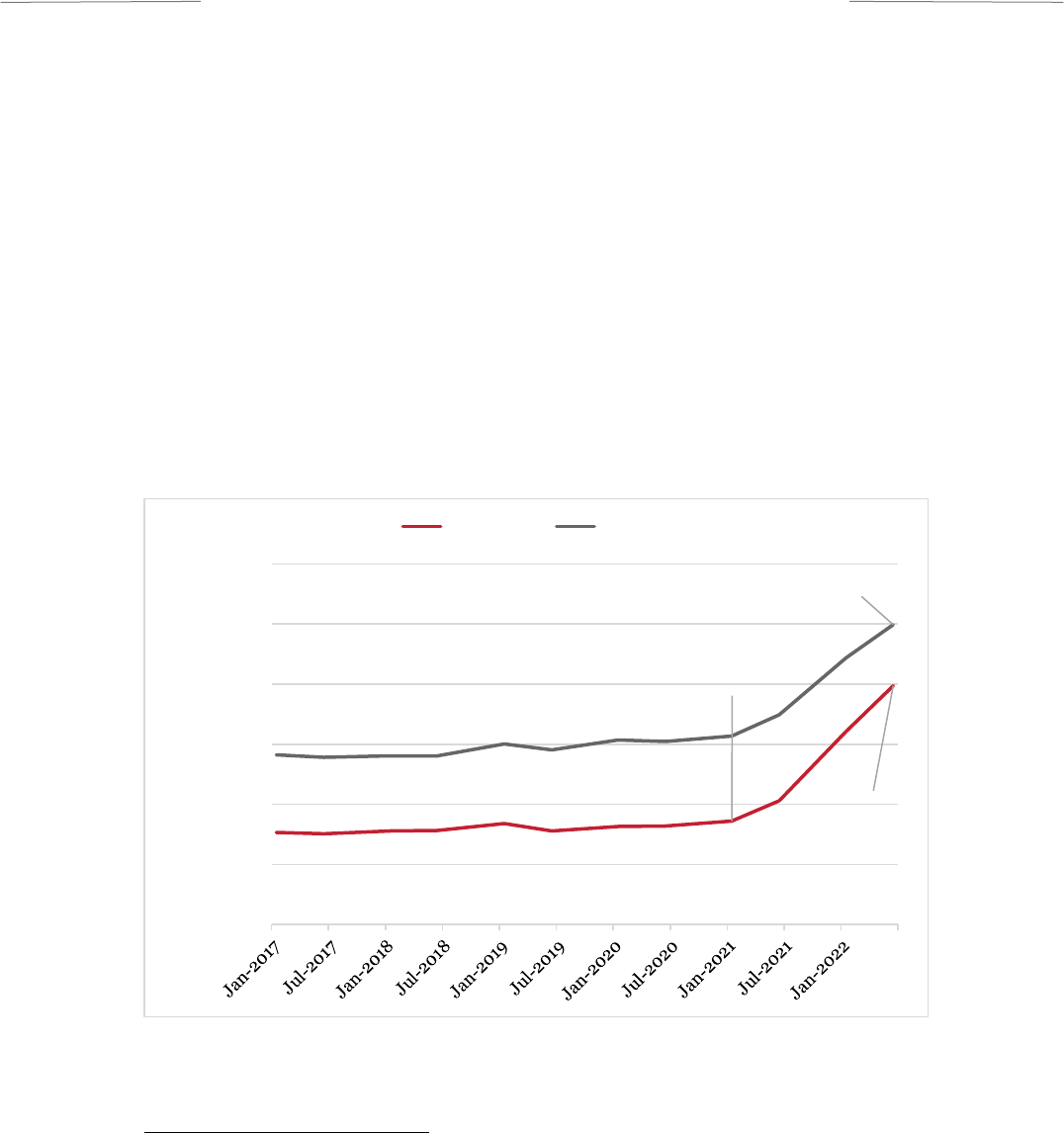
11
THE ECONOMIC RESEARCH CENTER AT THE BUCKEYE INSTITUTE
Faced with rapidly accelerating costs, Europe’s electric companies have since
shouldered some of the burden while passing their higher costs on to consumers.
Residential and industrial power prices rose 131 and 59 percent, respectively,
between January 2021 and January 2022.
35
(Figure 1.) Russia’s invasion of
Ukraine in February 2022 made matters worse, spiking European power prices 92
percent between June 2021 and June 2022.
36
Caught between poorly conceived
economic policy choices and dwindling resource supply caused by geopolitical
turmoil, European businesses, and families should not expect energy prices to fall
anytime soon. In fact, they will likely only get worse. EU ETS credit prices are
projected to reach 130 euros ($137.8) by 2030, further tightening industry and
household budgets. The “temporary” power conservation methods like cold
showers and clothesline drying that many Germans experienced in summer 2022
will probably become mainstays of an electricity-poor Europe.
37
Figure 1: EU Electricity Prices Per Kilowatt Hour (KWh)
38
35
Electricity price statistics, Eurostat (Last visited November 1, 2023); Benjamin Wehrmann,
What German households pay for electricity, Clean Energy Wire, January 16, 2023.
36
Electricity price statistics, Eurostat (Last visited November 1, 2023)
37
Philip Oltermann, German Cities Impose Cold Showers and Turn off Lights amid
Russian Gas Crisis, The Guardian, July 28, 2022.
38
Electricity price statistics, Eurostat (Last visited November 1, 2023)
€ 0.09
Jan 2021
(Beginning of ETS
Phase IV)
131%
Increase
59%
Increase
€ -
€ 0.05
€ 0.10
€ 0.15
€ 0.20
€ 0.25
€ 0.30
Euros/KWh
Residential Industrial

12
THE ECONOMIC RESEARCH CENTER AT THE BUCKEYE INSTITUTE
Heavy-handed climate policies have also made European companies less
competitive internationally. Germany’s chemical fertilizer industry, for example,
has been hit especially hard by rising EU ETS credit prices and taxes that have
driven up domestic production costs to facilitate stringent emissions reduction
policies. The response by German manufacturing and chemical companies:
relocate. German firms have now invested $650 billion, moving their operations
to the United States. But Germany supplies significant chemical and manufactured
goods to Europe, which means that more of those products must now be imported.
The EU responded to German offshore fertilizer production in the United States
by levying the world’s first carbon tariff
39
in October 2023. CBAM
40
is a tax added
to imported goods to prevent companies from manufacturing goods less expensive
in countries with lower emission standards.
41
Europe’s CBAM stops European
chemical companies from shipping cheaper U.S.-produced fertilizer back to
Europe. But the tariff simply raises prices that many European households and
farmers will have to pay for foreign-made goods and fertilizers—all in the name of
paying for carbon dioxide emitted while making goods in another country.
Although European farmers are not yet required to participate in the EU ETS
Phase IV program, they have not escaped the effects of Europe’s climate-control
regime. Several EU countries and industries have forced farmers to reduce their
emissions to meet national and privately backed climate targets. European banks
have begun withholding loans and funds from farmers with high GHG emissions.
42
In 2021, the Netherlands began debating rules that would buy out certain farms in
order to meet the EU-imposed emission reduction goals. And in May 2023, the EU
approved the Netherlands’ plan to pay $1.61 billion and use eminent domain to
acquire farms and livestock to reduce emissions.
43
Then, in June 2023, the
Netherlands announced that it would shut down gas production at the Groningen
field on October 1, 2024,
44
which will make manufacturing nitrogen fertilizer and
other agro- and petrochemicals in continental Europe more expensive. Belgium
also plans to restrict nitrogen fertilizer emissions, prompting Belgian farmers to
39
Mitchell Beer, Europe Launches World’s First Carbon Border Adjustment Rule, Energy
Mix, October 9, 2023.
40
Carbon Border Adjustment Mechanism, European Commission (Last visited November 3,
2023).
41
Raymond J. Kopp, William Pizer, and Kevin Rennert, Carbon Border Adjustments: Design
Elements, Options, and Policy Decisions, Resources for the Future, October 10, 2023.
42
Dutch gov’t to buy out farmers to reduce livestock emissions, Al Jazeera English, May
20, 2023.
43
EU okays $1.61 billion for Dutch government to buy out farmers, reduce nitrogen,
Reuters, May 3, 2023.
44
Netherlands to end Groningen Gas production by Oct 1, Reuters, June 23, 2023.

13
THE ECONOMIC RESEARCH CENTER AT THE BUCKEYE INSTITUTE
block the capital streets with tractors and burning tires in protest. “No Farmers,
No Food,” read one protester’s sign.
45
Mass livestock culls and new nitrogen fertilizer limits jeopardize Europe’s
increasingly fragile food security. Since the beginning of ETS Phase IV (January
2021-December 2022), the cost of farm fertilizers and soil improvers increased 49
percent.
46
As expected, the price of farm products like cereal grains, oils, fruits,
and eggs rose 42 percent. (Figure 2.)
47
Figure 2: European Farm Input and Output Price Indices
45
Susannah Savage, Aggro-culture: Farmers’ protest brings Brussels’ EU Quarter to a
standstill, Politico, March 3, 2023.
46
EU Agricultural Prices Continued to Rise in Q2 2022, Eurostat, September 30, 2022.
47
Ibid.
ETS Phase IV
Begins
-10%
0%
10%
20%
30%
40%
50%
60%
Percent Increase (Euros 2015)
Farm Inputs Farm Products

14
THE ECONOMIC RESEARCH CENTER AT THE BUCKEYE INSTITUTE
Over the same time, average food costs increased 22 percent. (Table 1.)
48
Table 1: Food Price Indices
49
Item
January 2021
December 2022
Percent
Increase
Average Food Costs
136.7
167.2
22%
Bread/Cereals
137.3
171.7
25%
Meat
134.2
161.5
20%
Milk Cheese/Eggs
142.2
175.1
23%
Fats/Oils
124.2
208.9
68%
As Europe’s chemical companies face increasing prices for ETS credits, a state-
mandated input for production, the cost of producing fertilizers has increased
considerably. These companies have passed the carbon price of their fertilizer onto
farmers, who have, in turn, passed most of the cost onto European consumers. The
rising food prices have forced many Europeans to look abroad for more affordable
international food options. In 2022, for example, the EU needed to raise its high-
quality beef import quota with the United States,
50
and food imports increased
generally by 32 percent due in part to declining domestic corn production.
51
Ultimately, European households must pay the price for the EU’s regulatory
regime, the reduced production, the more expensive imports, the tariffs, the
shipping, and the foreclosed farms and factories. And with the international
adjusted carbon tariff taking effect, European families will have no choice but to
pay higher prices for animal proteins and dairy products. These are the results that
Europe’s net-zero central planners have wrought.
48
Agriculture and Rural Development, European Commission (Last visited November 16,
2023).
49
Ibid.
50
European Union: US Beef Imports into the EU High Quality Beef Quota Increased in
2022, U.S. Department of Agriculture, March 1, 2023.
51
Good performance of EU agri-food trade in 2022 despite challenges, European
Commission, April 13, 2023.

15
THE ECONOMIC RESEARCH CENTER AT THE BUCKEYE INSTITUTE
Sri Lanka: Fertilizer or Famine
Carbon pricing
52
or emissions trading schemes
53
are commonly seen as the most
economically efficient method for reducing GHG emissions. In Europe, a large and
relatively diverse landmass and economy, they led to higher food prices. But Sri
Lanka shows what could happen when nitrogen and climate-control emission
reduction goals are enforced on a smaller, more fragile economy: famine.
In May 2021, Sri Lankan President Gotabaya Rajapaksa claimed that chemical
fertilizers posed a threat to public health and threatened the country’s long history
of “sustainable food systems.”
54
He promptly banned the use of artificial fertilizers.
That same year, President Rajapaksa relayed similarly negative feelings about
chemical fertilizers at the United Nations Climate Change Summit in Scotland and
justified his decision by citing emission reduction benefits: “Reactive nitrogen
emissions from overuse of artificial fertilizer is a major contributor to climate
change. In 2019, Sri Lanka spearheaded the Colombo Declaration on Sustainable
Nitrogen Management, which seeks to halve Nitrogen waste by 2030.”
55
Public
health concerns and emission reduction informed the Sri Lanka policy. President
Rajapaksa, for example, was historically and heavily influenced by scholar and
environmentalist activist Vandana Shiva, who cheered the decision, lauding the
plan to create a “poison free” world.
56
And less nitrogen fertilizer means less GHG
emissions, which would help Sri Lanka meet its Paris Climate pledge to reduce
emissions by 14.5 percent by 2030.
57
Nine months after the ban took effect, Sri Lanka fell into a climate policy-induced
famine, with yields for some crops falling as much as 30 percent.
58
Declining crop
yields contributed to food inflation, with prices ultimately rising 89 percent in
52
Effective Carbon Rates 2021, Organization of Economic Co-operation and Development, 2021;
Extended Brief on the Proposed Oil and Gas Cap, by Andrew Leach, House of Commons,
Standing Committee on Natural Resources, Parliament of Canada.
53
Emission trading systems, Organization of Economic Co-operation and Development (Last
visited November 20, 2023).
54
Kelly Torrella, Sri Lanka’s organic farming disaster, explained, Vox, July 15, 2022.
55
Speech by President Gotabaya Rajapaksa at the “World Leaders Summit of COP26”,
UN Climate Change Conference, Scotland, UK, Permanent Mission of Sri Lanka to the United
Nations, November 2, 2021; Ted Nordhaus, In Sri Lanka Organic Farming Went
Catastrophically Wrong, Foreign Policy, March 5, 2022.
56
Tunku Varadarajan, Sri Lanka’s Green New Deal Was a Human Disaster, The Wall Street
Journal, July 14, 2022.
57
Sri Lanka, Climate Promise, September 2021.
58
Chad De Guzman, The Crisis in Sri Lanka Rekindles Debate Over Organic Farming,
Time, July 13, 2022.

16
THE ECONOMIC RESEARCH CENTER AT THE BUCKEYE INSTITUTE
2022.
59
(See Figure 3.) And the rising food costs have induced famine. A quarter of
Sri Lankan adults have skipped meals so their children can eat. And half of Sri
Lankan families have had to let their children go hungry.
60
Figure 3: Sri Lanka Food Costs
61
59
Shyamika Jayasundara-Smits, Sri Lanka’s disastrous 2022 ends with a sliver of
optimism, East Asia Forum, January 13, 2023.
60
Sri Lanka: Half of Families Reducing Children’s Food Intake As The Country Slips
Further Into Hunger Crisis, Save the Children, March 2, 2023.
61
Colombo Consumers’ Price Index CCPI, Sri Lankan Government (Last visited November 2,
2023).
Nitrogen Fertilizer Ban
Promulgated
89%
Increase in
Food Prices
0
50
100
150
200
250
300
350
Sri Lankan Rupees (Real 2016)

17
THE ECONOMIC RESEARCH CENTER AT THE BUCKEYE INSTITUTE
AMERICA’S NET-ZERO EXPERIMENT:
DIRE ECONOMIC CONSEQUENCES
Sri Lanka may present an extreme example of failed sustainability and climate
policy, but Europe’s population, temperate climate, growing seasons, and diets are
similar to those in the United States and provide an ominous warning. One key
difference is Europe’s wholesale adoption of the Paris Climate Accord’s net-zero
policies.
When the United States first joined the Paris Climate Accords in September 2016,
it pledged to reduce total carbon dioxide equivalent (CO
2
e) emissions by 26-28
percent below 2005 emissions rates by 2025.
62
By 2020, the United States had
nearly achieved that initial goal, decreasing total GHG emissions by 24 percent
below 2005 levels. (See Figure 4). The Energy Information Administration
projected that even if America experienced record-setting economic growth and
reindustrialization, the U.S. would still be at or below the threshold set by the Paris
Climate Agreement.
63
Much of that successful emissions reduction was due to the
glut of natural gas caused by the domestic shale revolution’s onshore production.
That glut, which reduced the price of natural gas,
64
had two significant emissions
effects. First, it enticed U.S. utilities to use natural gas—a cleaner-burning energy
source—for electric power.
65
And second, it made natural gas a cost-competitive
chemical feedstock for fertilizers, plastics, chemicals, herbicides, and pesticides.
62
Natural Resource Defense Council, The Road From Paris: The United States Progress
Toward Its Climate Pledge, Issue Brief, November 2017.
63
Earth Institute, What is the U.S. Commitment in Paris?, Columbia Climate School, December
11, 2015; Climate Change Indicators: U.S. Greenhouse Gas Emissions, U.S. Environmental
Protection Agency (Last visited October 29, 2023); Energy-related CO
2
emissions could fall
25% to 38% below 2005 levels by 2030, U.S. Energy Information Administration (Last visited
October 29, 2023).
64
Henry Hub Natural Gas Spot Price, U.S. Energy Information Administration (Last visited
November 2, 2023). Natural gas prices had fallen from an average of $8.86 per million British
thermal units (MMBtu) in 2008 to an average of $3.04/MMBtu for the decade spanning 2011 to
2021.
65
Energy and Security: Developments in the energy field and questions of international
security, The University of Texas at Austin: Strauss Center (Last visited November 3, 2023); Daron
Acemoglu, Philippe Aghion, Lint Barrage, and David Hemous, Climate Change, Directed
Innovation, and Energy Transition: The Long-Run Consequences of the Shale Gas
Revolution, working paper, National Bureau of Economic Research, September 11, 2023.

18
THE ECONOMIC RESEARCH CENTER AT THE BUCKEYE INSTITUTE
Despite having achieved its original Paris Climate Agreement goal, President Biden
recommitted the United States to the Paris Climate Accords and promised to
reduce emissions by 50-52 percent below 2005 emissions by 2030. But there is no
second shale revolution on the horizon to help fulfill this pledge. Instead, the Biden
administration has promulgated a series of subsidies, regulations, taxes, and
executive orders to restrict the supply of oil and natural gas. Reducing that supply
will raise prices for refineries, chemical plants, fertilizer manufacturers, and
ultimately, the farmers who rely on the products those industries produce. Without
a new shale revolution to help cut emissions, the regulatory apparatus will try to
meet the administration’s quixotic goals by cutting oil and natural gas supplies,
replacing fossil-fuel energy with renewable power sources, and requiring farmers
to reduce emissions on their farms. Much like they did in Europe, these net-zero
policies will have dire impacts on farmers and food prices.
Figure 4: U.S. GHG Emissions from All Sources
66
Impacts of Cutting U.S. Oil and Gas Supplies
The Biden administration’s primary tactic to achieve net-zero emissions targets
has been to reduce America’s oil and natural gas supplies through regulation,
delay, and revocation. Complying with a net-zero-inspired provision in the
Inflation Reduction Act, the Department of the Interior (DOI) began raising oil and
66
Climate Change Indicators: U.S. Greenhouse Gas Emissions, U.S. Environmental
Protection Agency (Last visited October 29, 2023).
-6%
2010
-11%
2015
-24%
2020
-30%
-25%
-20%
-15%
-10%
-5%
0%
5%
2005 2010 2015 2020
Emissions (Millions of Tonnes CO2e)
Total Emissions 2005 Baseline 2015 Paris Agreement Target

19
THE ECONOMIC RESEARCH CENTER AT THE BUCKEYE INSTITUTE
natural gas royalty rates for onshore oil and gas wells in April 2022.
67
Royalty rates
are a tax on energy producers, making it harder for drillers to profitably drill on
federal lands.
68
A proposed DOI rule released on July 25, 2023, began the process
of codifying the higher royalty rates. Then, in August 2023, the Biden
administration finalized a rule banning new offshore oil and natural gas leasing.
69
In September 2023, the Biden administration proposed yet more bans on drilling
new oil wells on highly productive shale oil lands in New Mexico,
70
an ominous
move for shale oil drillers who need constant access to new land to drill and replace
rapidly declining production from shale wells.
71
Even without domestic production restrictions, the United States does not produce
enough heavy oil to satisfy the demand for diesel fuel vital to farmers. Most of
America’s heavy oil comes from Alberta, Canada. The Keystone XL pipeline would
have expanded Alberta’s export capacity and dropped the price of heavy oil for
Houston refineries, but President Biden revoked the Keystone XL pipeline permit
by executive order on his first day in office.
72
That order made America’s diesel
supply dependent on heavy oils from Venezuela and Saudi Arabia—adding
shipping expenses, transportation risks, and geopolitical insecurity to the diesel
supply chain.
Artificially restricting access to oil and natural gas through federal climate-based
policies has economic consequences. The world has seen some of the consequences
of restricted supply already in the wake of Russia’s invasion of Ukraine in February
2022
73
and protests in Libya
74
that sent crude oil prices up to $120 per barrel
twice.
75
An International Monetary Fund (IMF) study highlighted the role of
67
Biden Increases Oil Royalty Rate and Scales Back Lease Sales on Federal Lands, The
Associated Press, April 16, 2022.
68
U.S. Bureau of Land Management, Proposed update to Fluid Mineral Lease and Leasing
Process, July 24, 2023.
69
Zack Budryk, Biden Administration Reinstates Obama-era Offshore Drilling Safety
Rules, The Hill, August 22, 2023.
70
Thomas Catenacci, Biden admin unleashes 50-year mining, oil drilling ban across
thousands of acres in New Mexico, Fox News, September 18, 2023.
71
Benjamin Storrow, Offshore oil is about to surge, Climate Wire, March 22, 2023.
72
Matthew Brown, Keystone XL pipeline nixed after Biden stands firm on permit,
Associated Press, June 9, 2021.
73
Annabelle Liang and Daniel Thomas, Ukraine war: Oil prices fall back after cap on Russian
crude kicks in, BBC, December 5, 2023.
74
Kimberly Peterson and Candace Dunn, Conflict in Libya since 2011 civil war has resulted
in inconsistent crude oil production, U.S. Energy Information Administration, August 12,
2022.
75
U.S. Crude Oil First Purchase Price, U.S. Energy Information Administration (Last visited
November 16, 2023).

20
THE ECONOMIC RESEARCH CENTER AT THE BUCKEYE INSTITUTE
surging fossil fuel prices that raised Europe’s cost of living in 2022 by 7 percent.
76
In America, decade-high oil and natural gas prices led to surging inflation, and U.S.
gas prices hit an all-time high, crossing $5.00 per gallon in June 2023.
77
A hot summer and drought in the U.S. caused wind turbines to stop turning and
hydroelectric power shortages across the country.
78
Natural gas was in high
demand, and utility companies quickly bought as much as they could to maintain
power grid stability. As a result, August 2022 saw natural gas prices crest $9.00
per thousand cubic feet, a decade high.
79
And Americans paid dearly for it.
Electricity bills rose 14.3 percent, double the inflation rate.
80
Fortunately,
American drillers were still able to provide energy companies with enough oil and
natural gas to keep businesses and households lit, but the Biden administration’s
climate initiatives have hindered, not helped, that effort.
Choking Off Chemicals’ Feedstock
Restrictions on U.S. oil and natural gas drilling, which ultimately depletes oil and
gas supplies, will have the same impact in America that Europe’s natural gas
import limits and looming closure of its largest natural gas field have had in
Europe: chemical companies will be less competitive internationally. In 2022, U.S.
chemical companies faced rising input costs brought on by rapidly rising natural
gas and energy prices.
81
Now, chemical companies face nearly $7 billion in
compliance costs from the Biden administration’s 13 proposed European-style
regulations on chemical producers.
82
American Chemical Council president Chris
Jahn emphasized in a September 2023 press conference that “the cumulative
regulatory impact we are talking about here is unprecedented in [the chemicals
industry]… there are more major reg[ulations] pending in regards to [the
76
Anil Ari et al., Surging Energy Prices in Europe in the Aftermath of the War: How to
Support the Vulnerable and Speed up the Transition away from fossil fuels, International
Monetary Fund, working paper, July 29, 2022.
77
U.S. All Grades All Formulation Retail Gasoline Prices, U.S. Energy Information
Administration (Last visited November 16, 2023).
78
Kirby Lawrence, Average cost of wholesale U.S. Natural Gas in 2022 highest since 2008,
U.S. Energy Information Administration, January 9, 2023; Jayme Lozano Carver, Why the Texas
grid causes the High Plains to turn off its wind turbines, Texas Tribune, August 2, 2022;
Laila Kearney, Soggy California winter set to charge up state’s hydropower sector, Reuters,
April 3, 2023.
79
Natural Gas, U.S. Energy Information Agency (Last visited November 16, 2023).
80
Stephen Singer, Electricity prices surged 14.3% in 2022, double overall inflation: US
report, Utilty Dive, January 19, 2023.
81
Natural Gas, U.S. Energy Information Agency (Last visited November 16, 2023).
82
Snapshot: Anticipated Regulation Burden/Costs Facing the Chemical Sector,
American Chemical Council, September 20, 2023

21
THE ECONOMIC RESEARCH CENTER AT THE BUCKEYE INSTITUTE
chemicals] industry than the last three administrations combined.”
83
At the top of
the regulatory list is the SEC’s proposed ESG-reporting rule, which will cost the
industry an estimated $2.4 billion.
84
Restricted oil and gas supplies raise oil and gas prices, which make it more
expensive for chemical producers to synthesize chemicals for basic products on
which U.S. households and farmers rely. Farm pesticides, herbicides, and
fertilizers synthesized from oil and natural gas will be more expensive to make, and
farmers will have little choice but to pass those higher costs on to American
consumers.
85
In late 2021, nitrogen fertilizer prices soared 235 percent
86
due to
elevated global demand, surging natural gas prices that reduced fertilizer
production,
87
and the closure of two major European fertilizer plants.
88
The USDA
estimated that the spike in fertilizer prices increased farmer’s operating costs for
growing corn and wheat by 35 and 36 percent, respectively.
89
Those higher
production costs led to the largest increase in food prices—nearly 11 percent—in
over 40 years.
90
And although inflation has since slowed, food and fertilizer prices
have not returned to pre-2021 levels.
91
Green New Deal Can’t Power the Farm
The Green New Deal’s net-zero emissions policies, revived by the Inflation
Reduction Act, encourage by regulatory rule a national shift from fossil-fuel-
powered vehicles and equipment to electric vehicles (EVs) and equipment. That
transition is problematic—especially for farmers and food prices—for several
reasons.
83
American Chemical Council, Chemistry Creates, America Competes, September 20, 2023.
84
American Chemical Council, Snapshot: Anticipated Regulation Burden/Costs Facing the
Chemical Sector, September 20, 2023.
85
Products made from oil and natural gas, U.S. Department of Energy Office of Fossil Energy
(Last visited November 16, 2023).
86
Angelica Williams and Amy Boline, Fertilizer prices spike in leading U.S. market in late
2021, just ahead of 2022 planting season, U.S. Department of Agriculture Economic Research
Service, February 9, 2022.
87
Shelby Myers, Too many to count: Factors Driving Fertilizer Prices Higher and Higher,
Farm Bureau, December 13, 2021.
88
Patrick Knight, Major Fertilizer Plant Closures in Europe Instil Price Rise and Threat
to Food Supply, Chemanalyst, September 17, 2021.
89
Impacts and Repercussions of Price Increases on the Global Fertilizer Market, U.S.
Department of Agriculture Foreign Agricultural Service, June 2022.
90
Steve Morris, Sticker Shock at the grocery store? Inflation Wasn’t the only reason food
prices increased, U.S. Government Accountability Office, April 11, 2023.
91
Consumer Price Index for All Urban Consumers: Food in U.S. City Average, FRED (Last
visited November 16, 2023).

22
THE ECONOMIC RESEARCH CENTER AT THE BUCKEYE INSTITUTE
First, EVs are significantly less reliable and more expensive to purchase, repair,
power, and maintain than combustion engine vehicles, making them impractical
and ill-suited to working farms. Farm equipment must be durable and capable of
operating in all weather conditions. Tractors and farm equipment must operate in
offroad environments and on poorly paved roads under constant risk of collisions
that can permanently damage an electric vehicle’s sensitive parts, rendering it
useless.
92
EV batteries drain faster in extreme cold and heat,
93
and EVs lose range
in the rain due to lower resistance between the car and the road and power
diversion to the windshield wipers and headlights.
94
Water damage from rain or
flooding can damage and prematurely kill an EV’s battery.
95
And although electric
cars have fewer parts, they require more maintenance and expensive repairs than
conventional gas-powered cars. Replacing an electric vehicle battery typically costs
from $5000 – $15,000,
96
and general EV repairs require more labor and cost 25
percent more than standard combustion vehicles.
97
Insurance companies have
noticed these extra costs and raised premiums by 25 percent on electric vehicles.
98
And the immense weight of the battery makes electric tractors poorly suited for
farms because it damages soil, reduces speed, and consumes more energy
equivalent than a conventionally powered tractor.
99
These heavy farm vehicles
would effectively negate the soil-health benefits accrued from no-till farming, a
government-sanctioned “green” farming practice.
These reliability and financial concerns make EVs unattractive as farm equipment
and will make running a successful farm more expensive, but Biden administration
92
What happens when your car is totaled, USAA, December 5, 2022; The real costs of
driving and insuring your electric vehicle, USAA, August 30, 2023.
93
Kyle Stock, A heat wave will cook your EV’s battery, if you let it, Los Angeles Times, July
13, 2023.
94
Mike, Becker, How does the weather affect the range of an electric car?, EVadapt, October
12, 2023.
95
Responding to Electric Vehicle Fires Caused by Salt Water Flooding, U.S. Fire
Administration, October 20, 2022.
96
The real costs of driving and insuring your electric vehicle, USAA, August 30, 2023.
97
Dave LaChance, CCC report: Repair costs, turnaround times higher for EVs, Repairer
Driven News, July 12, 2022; Lora Kolodny, Hertz pulls back on EV plans citing Tesla price
cuts, high repair costs, CNBC, October 26, 2023; Ryan Mandell, Plugged-In: EV Collision
Insights Q2 2023, Mitchell, August 10, 2023; Andrew Lambrecht, EVs are More Expensive to
Repair In Collisions, Study Finds, InsideEVs, August 28, 2023.
98
Dillon Leovic, How Much Does Electric Car Insurance Cost?, ValuePenguin, June 1, 2023;
Ryan Brady, Electric Car Insurance: What to Know Before you Buy, Nerdwallet, July 7, 2023.
99
J Sitompul, H Zhang, R Noguchi , and T Ahamed, “Optimization Study on the Design of
Utility Tractor Powered by Electric Battery” IOP Conference Series: Earth and
Environmental Science, (2019); Oscar Lagnelöv, Gunnar Larsson, Anders Larsolle, and Per-
Anders Hansson, “Impact of Lowered Vehicle Weight of Electric Autonomous Tractors in
a Systems Perspective” Smart Agricultural Technology, Volume 4, (August 2023).

23
THE ECONOMIC RESEARCH CENTER AT THE BUCKEYE INSTITUTE
rules will all but force farmers to buy or subsidize them anyway. The Department
of Transportation’s new tailpipe emissions standards on heavy-duty trucks and
passenger cars will require two-thirds of all vehicles sold in 2032 to be electric.
100
But thus far, electric truck makers have failed to profitably deliver reliable electric
trucks suitable for the farm despite significant federal subsidies. In 2023, two
electric truck manufacturers filed for bankruptcy.
101
Ford Motor Company lost
roughly $36,000 on every F-150 Lightening truck that rolled off its assembly
line.
102
To offset those losses, Ford raised its prices on standard trucks,
103
which
means that farmers and other heavy-duty truck buyers have been involuntarily
subsidizing the EV transition and paying more than necessary for their truck
preferences—hardly an endorsement of the EV option.
Second, a nationwide transition to electric energy depends entirely on
intermittent, unreliable zero-emission sources of electric power, namely wind and
solar. Wind and solar do not produce power consistently throughout the day, and
the variation in renewable power generation makes it harder for operators to
schedule power demand, which makes energy prices volatile and ultimately more
expensive.
104
In Texas and California, the first and second largest producers of
variable renewable electricity in America,
105
renewable power production during
daylight hours surges, causing power prices to plummet, but in the early evening
when power prices peak, natural gas power plants need to be brought online.
During hot August nights in Texas, power prices hit $4,000 per megawatt-hour
(MWh) in 2023,
106
which meant that farmers hatching broiler chickens at an
industrial scale paid six cents per KWh—a 666.67 percent increase in incubation
costs during the elevated price period.
107
For farmers who use electric incubators
100
Biden-Harris Administration Proposes Strongest-Ever Pollution Standards for Cars
and Trucks to Accelerate Transition to a Clean-Transportation Future, U.S.
Environmental Protection Agency Office of Air and Radiation news release, April 12, 2023.
101
Thomas Catenacci, Electric truck company touted by Trump as ‘an incredible concept’
files for bankruptcy, Fox Business, June 27, 2023; Nick Carey, Electric truck maker Volta
Trucks files for bankruptcy in Sweden, Reuters, October 17, 2023.
102
Paul Lienert and Nathan Gomes, Ford again warns on EV results, withdraws 2023
forecast, Reuters, October 27, 2023.
103
Sean Tucker, 2024 Ford F-150 Gets Across-the-board Price Increase, Kelly Blue Book,
October 6, 2023.
104
Severin Borenstein, The West Coast’s Bleak Energy Winter, Energy Institute at HAAS,
January 30, 2023.
105
1.11 Net Generation from Renewable Sources excluding hydroelectric by state July
2023, U.S. Energy Information Administration (Last visited October 4, 2023).
106
Saul Elbein, Texas electricity price surges amid record heat and demand, The Hill, June
26, 2023.
107
G.T. Tabler, I.L. Berry, and A.M. Mendenhall, “Energy Costs Associated with Commercial
Broiler Production” Avian Advice, Volume 5, Number 4 (Winter 2003) p. 1 – 4.

24
THE ECONOMIC RESEARCH CENTER AT THE BUCKEYE INSTITUTE
or refrigerators, an unstable electricity grid could mean thousands of dollars lost
on unhatched chicks or spoiled produce.
To facilitate a zero-emissions electric grid buildout would raise electricity prices
and threaten reliability.
108
Nevertheless, the federal government has offered
billions of grant dollars to build renewable energy sources across the country.
109
The USDA offered $11 Billion to rural communities to build solar arrays, wind
farms, and high-voltage transmission lines.
110
But, renewable power is only feasible
if natural gas power plants remain ready to replace gaps in generation. The only
alternative are daily blackouts.
111
Instead of securing natural gas stopgaps,
however, the Biden administration has threatened this critical component in rural
America. On June 3, 2023, President Biden signed the Fiscal Responsibility Act
(FRA),
112
which expedites the federal permitting reform for all energy
infrastructure projects, especially natural gas pipelines. But less than two months
later, the White House Council on Environmental Quality proposed new rules to
expedite renewable projects while reinstating the bureaucratic red tape on natural
gas projects that the FRA had just removed.
113
The Biden administration’s efforts to force farmers to adopt electric equipment ill-
suited to farming and to replace natural gas generators with unreliable renewable
energy sources is a recipe for unsustainable farming. Unfortunately, Washington’s
central planners seem oblivious to that stubborn fact and remain committed to
making Europe’s mistakes.
108
Institute for Energy Research, The Challenges and Costs of Net-Zero and the Future of
Energy, August 2023.
109
Federal Financial Interventions and Subsidies in Energy in Fiscal Years 2016 – 2022,
Energy Information Administration, August 1, 2023.
110
Biden-Harris Administration Makes Historical $11 Billion Investment to Advance
Clean Energy Across Rural America Through Investing in America Agenda, United States
Department of Agriculture Rural Development news release, May 16, 2023.
111
Isaac Orr, American Experiment modeling finds EPA’s Carbon Rule would cause
blackouts in MISO, cost $246 billion, American Experiment, August 9, 2023.
112
Fiscal Responsibility Act of 2023, Public Law 118-5, Congress.gov, June 3, 2023
113
Biden-Harris Administration Proposes Reforms to Modernize Environmental
Reviews, Accelerate America’s Clean Energy Future, and Strengthen Public Input,
White House press release, July 28, 2023; Patrice Douglas, Biden’s Permitting Proposal Would
Backfire, Add Red Tape for Affordable Energy Projects, RealClear Energy, September 19,
2023.

25
THE ECONOMIC RESEARCH CENTER AT THE BUCKEYE INSTITUTE
ENVIRONMENTAL, SOCIAL,
GOVERNANCE REPORTING
REQUIREMENTS: MAKING FOOD
MORE EXPENSIVE
ESG reporting requirements have become increasingly important and
burdensome. Their initial focus offered financial planners information about a
company’s emissions so that investors could assess whether the company aligned
with a fund’s sustainable investment goals. And now, as Blackrock’s CEO
emphasized in 2022, “climate risk [is] investment risk,” and “transparency around
your company’s planning for a net zero world [is] an important element of that.”
ESG requirements were originally directed at oil companies and led investors to
eschew investing in oil production, with investment in petroleum extraction sitting
at record lows.
114
But ESG attention has crept out of the fossil-fuel space and into
other industries, including agriculture. With its heavy use of artificial fertilizers
and fossil fuels, livestock methane emissions, weed and bug sprays, and genetically
modified crops, agriculture has been targeted by ESG fiduciaries. As Jeremy Coller,
a leading ESG fund manager, said, “[w]hen it comes to climate change, cows are
the new coal.”
115
ESG reporting is currently optional, but in March 2022, the SEC proposed a
mandatory ESG disclosure rule that would apply to every publicly traded
company.
116
The rule would mandate costly ESG emissions reporting for a firm’s
entire supply chain, requiring large publicly traded food processing companies,
grocery stores, and restaurant groups to track and report emissions from farm to
table. Large companies looking to reduce their overall emissions would stop
purchasing food from farmers with high emission rates, once again applying
financial costs and pressures to the American farmer. In a letter to the SEC, 118
members of Congress expressed their concern with the rule’s
117
“significant and
114
MacroVoices #385 Dr. Anas Alhajji: 2024 Energy Markets Outlook & More,
MacroVoices, July 20, 2023.
115
Jeremy Coller, When it comes to climate change, cows are the new coal, Context,
Thomson Reuters Foundation, November 8, 2022.
116
SEC Proposes Rules to Enhance and Standardize Climate-Related Disclosures for
Investors, U.S. Securities and Exchange Commission press release, March 21, 2022.
117
Tyler Olson, SEC’s proposed ESG rule will leave small farms in the lurch, lawmakers
from both parties say, Fox Business, May 26, 2022.

26
THE ECONOMIC RESEARCH CENTER AT THE BUCKEYE INSTITUTE
unworkable regulatory burden” that will misplace “time and energy… into
complying with this new regulation [and] will divert American farmers away from
their primary goal of producing our food, fuel, and fiber.”
118
And those
congressional cost concerns are warranted. In 2022, ESG-related reporting
expenses reached $8.4 billion. For farmers and ranchers, hiring a single ESG
consultant can cost at least $25,000, with prices increasing with the scale of the
operation.
119
As ESG ratings reach the farm either by the SEC’s new climate disclosure rule or
regulation, there will be downstream consequences.
120
Banks with obligations to
ESG-conscious shareholders will withhold loans from farmers with poor practices,
as they do in Europe.
121
Insurance companies using climate models to write carte
blanche premiums
122
will raise rates to cope with perceived climate risks and use
ESG metrics to calculate new premiums for farmers—moves that risk putting
farmers out of business. Similarly, food processors and restaurant groups may only
deal with farmers who meet their ESG requirements or help lower their emissions
scores. In 2018, farmers were projected to pay an additional $1,200 annually in
ESG compliance, resulting in the closing of small businesses and destabilizing food
security.
123
Additionally, in 2018, nearly 70 percent of farmers were using non-
computerized tools that would need to be updated to comply with ESG
standards.
124
Under the SEC’s mandatory disclosure rule, farmers who sell their
produce to publicly traded companies will have no choice but to purchase the
monitoring software and begin quantifying their emissions. But their costs won’t
stop there.
118
Letter to Securities and Exchange Chair Gary Gensler from Members of the U.S.
House of Representative, 117
th
Congress 2
nd
Session, May 25, 2022.
119
Rick Brundrett, Serious business: How ESG mandates can hurt small SC firms, The
Nerve, May 12, 2022.
120
Shelby Myers, Overreach of SEC Proposed Climate Rule Could Hurt Agriculture,
American Farm Bureau Federation, May 6, 2022.
121
Net-Zero Banking Alliance, United Nations Environment Programme (Last visited November
3, 2023); Vincent Gauthier, How banks can move toward net zero agriculture portfolios,
Environmental Defense Fund, February 24, 2022; Virginia Furness, UK farmers hungry for
climate finance but banks want more data, Capital Monitor, January 25, 2022.
122
Ken Sweet, Homeowners face rising insurance rates as climate change makes
wildfires, storms more common, Associated Press, September 20, 2023.
123
Nina Sparling, US Farm Management Software Market to Reach $1.62bn – Report,
AgFunder Network Partners, April 4, 2018; ZeroHedge, New ESG Rules are Hurting American
Farmers, Oil Price.com, July 2, 2022.
124
ZeroHedge, New ESG Rules are Hurting American Farmers, Oil Price.com, July 2, 2022.

27
THE ECONOMIC RESEARCH CENTER AT THE BUCKEYE INSTITUTE
QUANTIFYING CARBON COSTS OF
ENVIRONMENTAL, SOCIAL,
GOVERNANCE: THE METHODOLOGY
The Economic Research Center (ERC) at The Buckeye Institute uses publicly
available emissions and consumer spending data and a basic carbon pricing
methodology to estimate the economic impact that Biden administration policies
designed to meet net-zero carbon emissions pledges under the Paris Climate
Accords will have on American farmers and households.
The ERC assumes the best-case scenario in which the net-zero target is achieved
through an efficient carbon pricing system with no deadweight loss or costs of
enforcing the policy. The ERC does not include the cost of purchasing the
emissions monitoring technology that farmers will need to purchase before they
can begin mitigating or offsetting emissions. The ERC could only find one cost
projection for emission monitoring software. Without a much larger sample size,
the ERC could not determine how much a farm will need to pay to monitor
emissions. The ERC also does not consider the bureaucratic costs associated with
preparing the emission reports for companies or any legal fees incurred.
Estimating the Cost of Environmental Social Governance
ESG-reporting requirements and other climate-related disclosure policies are still
too nascent to measure accurately. But, based on global experiences with net-zero
policies, the goals of ESG reporting, and emissions data from fossil-fuels, the ERC
can estimate the economic impact a carbon pricing system will have on farms and
consumers.
The ERC assumes that the SEC’s new ESG rule and other state regulations will
create a de facto carbon pricing system by requiring companies to monitor
emissions from their entire supply chain and produce disclosure reports. Further,
the ERC assumes that Farmers who sell their meat and produce to publicly traded
companies will need to report their emissions to publicly traded companies who
will be subjected to the rule.
Designing the Model Farm
The ERC constructs a model American corn farm to estimate the impact of ESG-
reporting requirements on farms. Corn has the most available fertilizer usage data,
it is the largest crop in the country, and most U.S. farms will plant it in rotation

28
THE ECONOMIC RESEARCH CENTER AT THE BUCKEYE INSTITUTE
with other crops during a harvest year. Corn’s high nitrogen fertilizer and grain
drying requirements make it the most energy and emissions-intensive crop to
grow.
125
The ERC’s model farm is 725 acres, the average size corn farm reported by
the United States Department of Agriculture.
126
The ERC estimates its model
farm’s operating costs and total emissions from fertilizer, diesel fuel, and propane-
powered grain drying. These three emitters are large sources of emissions more
easily tracked by ESG consultants. ESG consultants may focus on other
environmental impacts such as riparian and lacustrine fertilizer run-off, soil
health, and GMOs. These and other potential ESG concerns are not related to
carbon emissions, making them much harder to estimate mitigation costs, and are
not included in the model.
Operating Costs
The ERC’s model operating cost estimate focuses on harvesting one average crop
of corn. The ERC assumes the national average yield of 172 bushels per acre, as
reported by the University of Illinois Urbana-Champaign.
127
The ERC assumes 1.25
lbs. of nitrogen fertilizer per bushel of corn, as reported in a fertilizer management
study published by Louisiana State University in 2021,
128
for a total farm fertilizer
usage of 97.4 short tons. The ERC uses the June 2023 price of $1116 per ton for
nitrogen fertilizer, as reported in the University of Illinois Urbana-Champaign’s
FARMDOC daily,
129
for a total farm price of approximately $109,000.
The ERC’s model fuel consumption relies on field operation and maintenance and
total tillage. The ERC’s estimate for tillage farm operations derives from Iowa State
University’s Farm Energy Study: Energy Consumption for Row Crop
Production,
130
which estimates that conventional till farms consume 6 gallons of
fuel per acre for a conventional till and a no-till field. The ERC’s model farm
assumes a conventional till operation to determine overall farm costs, but the ERC
also models fuel consumption for no-till farms to assess whether no-till farms will
be economically harmed by ESG-reporting policy.
125
Mark Hanna, John E. Sawyer, and Dana Petersen, Energy consumption for row crop
production, Iowa State University, June 2012.
126
Monica Saavoss, Tom Capehart, William McBride, and Anne Effland, Trends in Production
Practices and Costs of the U.S. Corn Sector, U.S. Department of Agriculture Economic
Research Service, Economic Research Report Number 294, July 2021.
127
Gary Schnitkey, Nick Paulson, Jim Baltz, and Carl Zulauf, Corn and Soybean Yields in 2022,
Farmdoc Daily, December 13, 2022
128
Rasel Parvej et al., Corn Nitrogen Management, Louisiana State University, March 2021.
129
Gary Schnitkey, Nick Paulson, and Jim Baltz, Nitrogen Fertilizer Prices Stabilize at High
Levels in Spring 2023, University of Illinois, farmdoc Daily, June 13, 2023.
130
Energy Consumption for Row Crop Production, Farm Energy, Iowa State University, June
2012.

29
THE ECONOMIC RESEARCH CENTER AT THE BUCKEYE INSTITUTE
The ERC estimates using 4,350 gallons of total diesel fuel on the conventional farm
and 1813 gallons on the no-till farm. The ERC estimates the price of diesel fuel
using the average diesel price of $3.25 per gallon over the last decade, as reported
by the U.S. Energy Information Administration.
131
The ERC averaged fuel prices
over a decade as a check against inherent price volatility. Assuming that 10-year
average price per gallon, the diesel costs for a conventional till farm total
$14,137.50. But farm operations must be performed regardless of diesel prices, so
fuel costs may represent a greater share of farm expenses than modeled here.
The ERC model farm reduces crop moisture content by five percent with a
propane-powered grain dryer because over 80 percent of all grain dryers in
America are powered by propane.
132
The ERC uses the Propane Education and
Research Council’s publicly available tool to estimate that 12,900 gallons of
propane will be needed.
133
The ERC uses the average propane price of $2.68 per
gallon from October 2022 to March 2023 for a total cost of $34,572.
134
Farm Emissions
The ERC estimates carbon dioxide emissions on the model farm from fertilizer,
diesel, and propane. The ERC uses a report published by the Royal Society to
estimate that producing one metric ton of androgynous ammonia, the purest form
of nitrogen fertilizer, produces 1.6 metric tons (tonnes) of CO2 emissions.
135
The
ERC uses EIA’s fuel emissions estimates of 5.75 KG of CO2 per gallon of propane
and 10.19 KG of CO2 per gallon of diesel to estimate its model farm’s propane and
diesel fuel emissions.
136
Total CO2 emissions from fertilizer, propane, and diesel
fuel were 155.9, 148.4, and 44.3 tonnes, respectively.
131
U.S. No 2 Diesel Retail Prices, U.S. Energy Information Administration (Last visited
November 2, 2023).
132
Propane’s role in the ag market: An overview of key applications, LPGas, July 17, 2023.
133
Grain Dryer Propane Use Calculator, Propane Education and Research Council (Last visited
November 2, 2023).
134
Weekly U.S. Propane Residential Price, U.S. Energy Information Administration (Last
visited November 16, 2023).
135
Bill David et al., Ammonia: zero-carbon fertiliser fuel and energy store, The Royal
Society, February 2020; Abdullah Emre Yüzbaşıoğlu, Ali Hikmet Tatarhan, and Ahmet Ozan
Gezerman, “Decarbonization in ammonia production, new technological methods in
industrial scale ammonia production and critical evaluations,” Heliyon, Volume 7, Issue
10, October 25, 2021; and fertilizer emissions converted to short tons by The Economic Research
Center at The Buckeye Institute from metric to short tons;
136
Carbon Dioxide Emissions Coefficients, U.S. Energy Information Administration, October
5, 2022.

30
THE ECONOMIC RESEARCH CENTER AT THE BUCKEYE INSTITUTE
Monetizing Emissions
The ERC assumes that ESG-reporting requirements will ultimately lead to
monetized agricultural emissions. That is, a farm’s carbon emissions will receive a
tangible economic value that will then need to be offset by new agricultural
practices. The ERC assumes carbon pricing will monetize emissions using the
widely accepted social cost of carbon (SCC) metric, with a price of $185 per tonne
derived from the “Comprehensive evidence implies a higher social cost of CO2”
study published by Resources for the Future fellow, Kevin Rennert. The ERC
monetizes farm emissions by multiplying the model farm’s total emissions by the
SCC.
Carbon Pricing
The ERC assumes that carbon pricing created by ESG requirements will not be
collected like traditional carbon taxes. Instead, reporting entities likely will price
total emissions reduction using the SCC to report the total value of emissions
reduced and placing a private carbon fee on Scope 3 emitters. Farms will be
expected to pay this fee either by investing in net-zero infrastructure, adopting new
farming practices, or buying carbon emission offsets.
Impact on Consumers
The ERC uses publicly available data from government agencies, universities, and
business analytic software to estimate the costs of ESG-reporting requirements
and carbon pricing that the ERC assumes will be passed on to consumers.
The ERC uses the Consumer Expenditure Survey to find what the average
American household ($70,000 per year) spends on groceries per year: $8,320. The
ERC uses data from the University of Michigan’s Center for Sustainability (UMCS)
to estimate the total carbon emissions for an average American household per year:
48 tons.
137
UMCS reported that 10-30 percent of a household’s annual emissions
come from their groceries’ supply chain. The ERC takes the midpoint of that
estimate, 15 percent of total emissions, to find that a typical household’s emissions
from food is equivalent to 7.2 tons of CO2e.
The Bureau of Labor Statistics and the USDA track the monthly average price of
meats, produce, grains, and dairy products.
138
These goods reflect typical American
consumption habits. The ERC uses Carboncloud’s Climatehub, a Swedish carbon
emissions database that tracks CO2e emissions from food products in grocery
137
Carbon Footprint Factsheet, Center for Sustainable Systems, University of Michigan, 2021.
138
Announcement of Class and Component Prices, U.S. Department of Agriculture,
November 1, 2023; Average Retail Food and Energy Prices, U.S. City Average and West
Region, U.S. Bureau of Labor Statistics (Last visited November 2, 2023).

31
THE ECONOMIC RESEARCH CENTER AT THE BUCKEYE INSTITUTE
stores, to estimate the carbon emissions of the following grocery items for which
there is current BLS or USDA pricing data: rice, spaghetti, flour, bread, American
cheese, cheddar cheese, milk, potatoes, oranges, bananas, lemons, strawberries,
sugar, coffee, beef, bacon, and eggs.
139
The ERC assumes these items reflect a
typical American weekly grocery list.
139
Climate Hub, CarbonCloud (Last visited November 2, 2023); Announcement of Class and
Component Prices, U.S. Department of Agriculture, November 1, 2023; Average Retail Food
and Energy Prices, U.S. City Average and West Region, U.S. Bureau of Labor Statistics (Last
visited November 2, 2023).

32
THE ECONOMIC RESEARCH CENTER AT THE BUCKEYE INSTITUTE
QUANTIFYING CARBON COSTS OF
ENVIRONMENTAL, SOCIAL,
GOVERNANCE: THE RESULTS
The monetized cost of CO
2
e emissions significantly increased the cost of U.S.
farming operations and the retail price of food.
Farming Operations
Carbon pricing—comprising 25 percent of total farm operating costs (Figure 5)—
significantly raises the cost of operating a farm. Because ESG-reporting
requirements require emissions monitoring, farms that can afford to monitor
carbon emissions will need to offset the monetized carbon emissions from
fertilizers, grain drying, and fuel use, which will increase annual operating costs by
34 percent. (See Figure 6.)
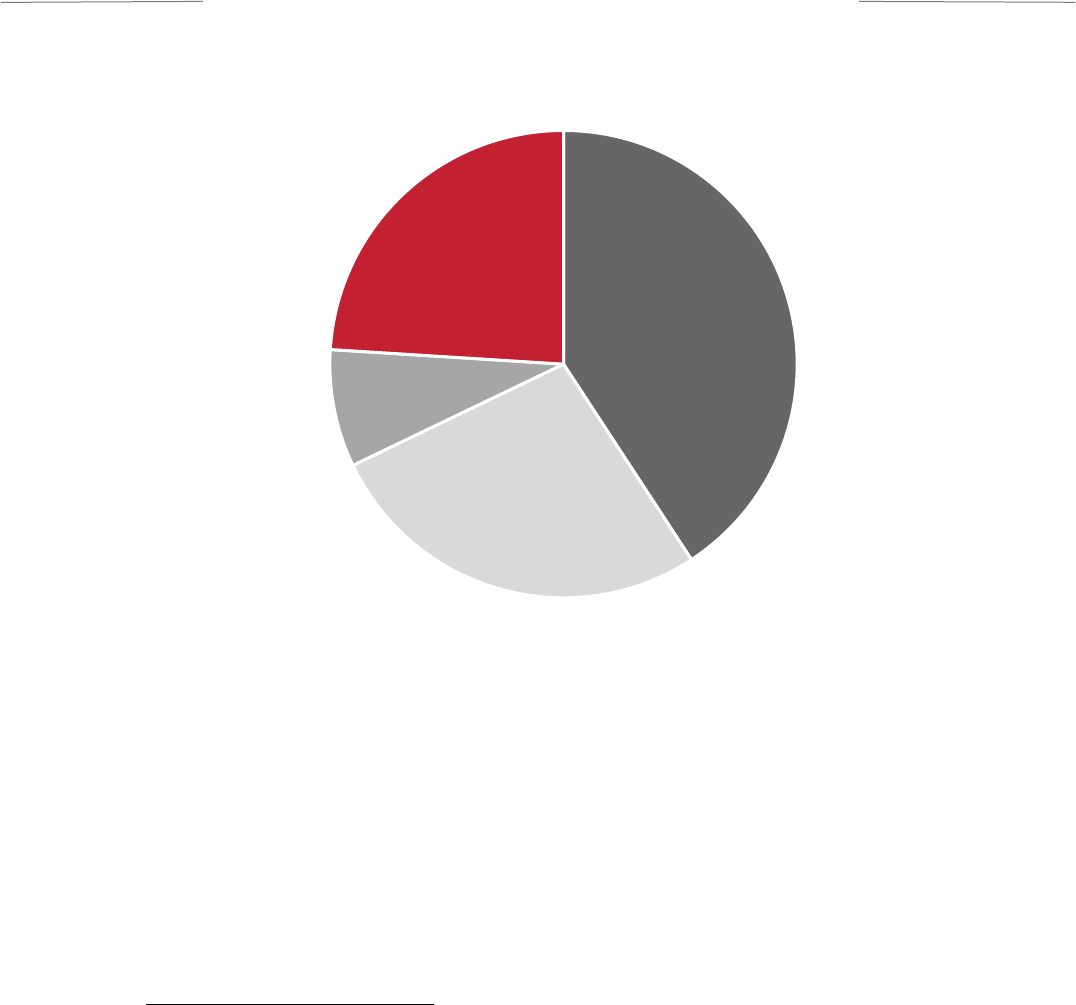
33
THE ECONOMIC RESEARCH CENTER AT THE BUCKEYE INSTITUTE
Figure 5: Tracked Carbon Price of Farming
140
140
Tracked carbon prices are: fertilizer and fuel. Graph produced using data from the following
sources: Bill David et al., Ammonia: zero-carbon fertiliser fuel and energy store, The Royal
Society, February 2020; Fertilizer emissions converted by The Economic Research Center and The
Buckeye Institute from metric to short tons; Gary Schnitkey, Nick Paulson, and Jim Baltz, Nitrogen
Fertilizer Prices Stabilize at High Levels in Spring 2023, University of Illinois, farmdoc
Daily, June 13, 2023; Sarah Sellars, Synthetic Nitrogen Fertilizer in the U.S., University of
Illinois, farmdoc Daily, February 17, 2021; Monica Saavoss, Tom Capehart, William McBride, and
Anne Effland, Trends in Production Practices and Costs of the U.S. Corn Sector, U.S.
Department of Agriculture Economic Research Service, Economic Research Report Number 294,
July 2021; Grain Dryer Propane Use Calculator, Propane Education and Research Council
(Last visited November 2, 2023); Carbon Dioxide Emissions Coefficients, U.S. Energy
Information Administration, October 5, 2022; and Economic Research Center calculations.
Fertilizer
42%
Drying
27%
Fuel
6%
Carbon Premium
25%

34
THE ECONOMIC RESEARCH CENTER AT THE BUCKEYE INSTITUTE
Figure 6: Farm Operating Expenses Under ESG
141
141
Graph produced using data from the following sources: Bill David et al., Ammonia: zero-
carbon fertiliser fuel and energy store, The Royal Society, February 2020; Fertilizer emissions
converted by The Economic Research Center and The Buckeye Institute from metric to short tons;
Gary Schnitkey, Nick Paulson, and Jim Baltz, Nitrogen Fertilizer Prices Stabilize at High
Levels in Spring 2023, University of Illinois, farmdoc Daily, June 13, 2023; Sarah Sellars,
Synthetic Nitrogen Fertilizer in the U.S., University of Illinois, farmdoc Daily, February 17,
2021; Monica Saavoss, Tom Capehart, William McBride, and Anne Effland, Trends in Production
Practices and Costs of the U.S. Corn Sector, U.S. Department of Agriculture Economic
Research Service, Economic Research Report Number 294, July 2021; Grain Dryer Propane Use
Calculator, Propane Education and Research Council (Last visited November 2, 2023); Carbon
Dioxide Emissions Coefficients, U.S. Energy Information Administration, October 5, 2022; and
Economic Research Center calculations.
$192,000 Current Costs
$257,000, 34% Increase in Annual
Farm Operating Expenses Due to Carbon Pricing
$0 $50,000 $100,000 $150,000 $200,000 $250,000 $300,000
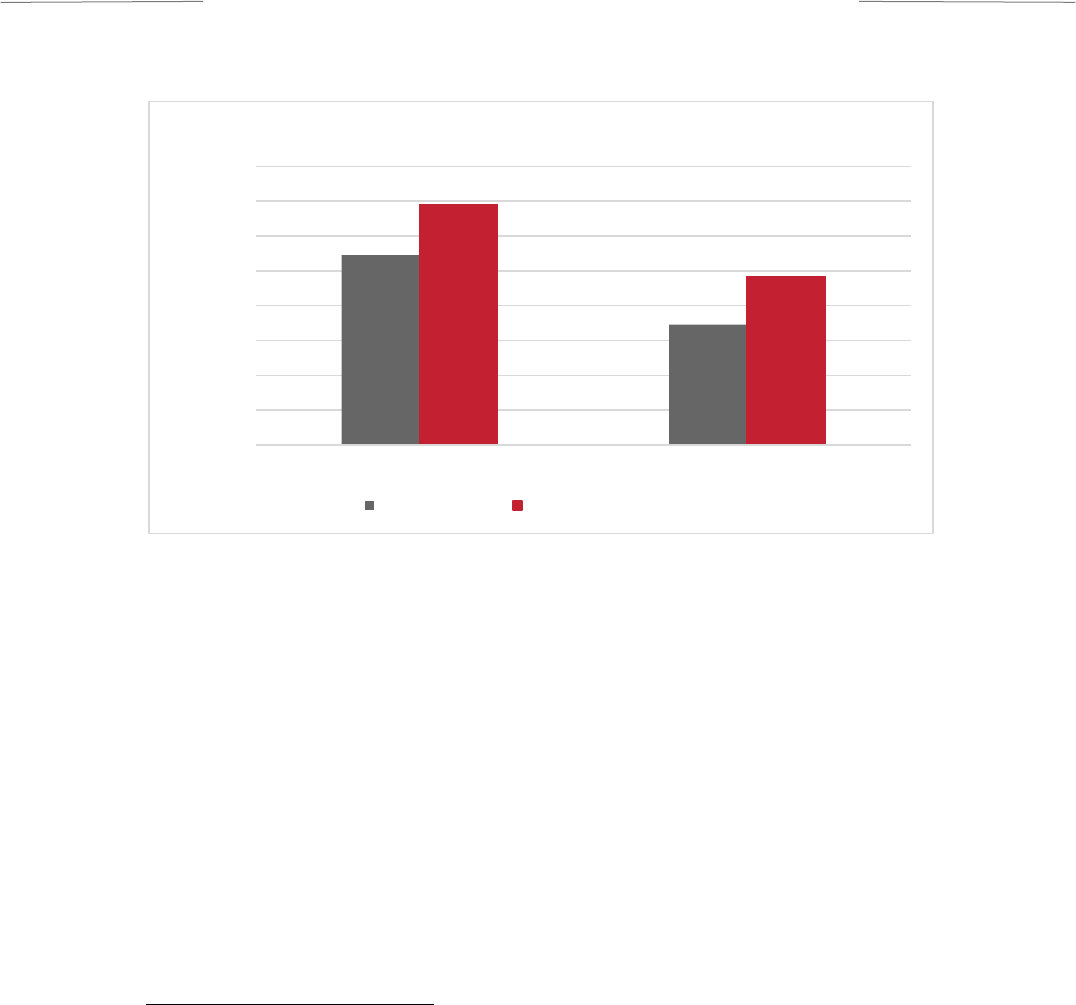
35
THE ECONOMIC RESEARCH CENTER AT THE BUCKEYE INSTITUTE
Figure 7: Carbon Price of Fertilizer and Grain Drying
142
142
Graph produced using data from the following sources: Bill David et al., Ammonia: zero-
carbon fertiliser fuel and energy store, The Royal Society, February 2020; Fertilizer emissions
converted by The Economic Research Center and The Buckeye Institute from metric to short tons;
Gary Schnitkey, Nick Paulson, and Jim Baltz, Nitrogen Fertilizer Prices Stabilize at High
Levels in Spring 2023, University of Illinois, farmdoc Daily, June 13, 2023; Sarah Sellars,
Synthetic Nitrogen Fertilizer in the U.S., University of Illinois, farmdoc Daily, February 17,
2021; Monica Saavoss, Tom Capehart, William McBride, and Anne Effland, Trends in Production
Practices and Costs of the U.S. Corn Sector, U.S. Department of Agriculture Economic
Research Service, Economic Research Report Number 294, July 2021; Grain Dryer Propane Use
Calculator, Propane Education and Research Council (Last visited November 2, 2023); Carbon
Dioxide Emissions Coefficients, U.S. Energy Information Administration, October 5, 2022; and
Economic Research Center calculations.
27% Increase
40% Increase
$0
$20,000
$40,000
$60,000
$80,000
$100,000
$120,000
$140,000
$160,000
Fertilizer Grain Drying
Fertilizer Increase
Current Price Carbon Pricing Premium
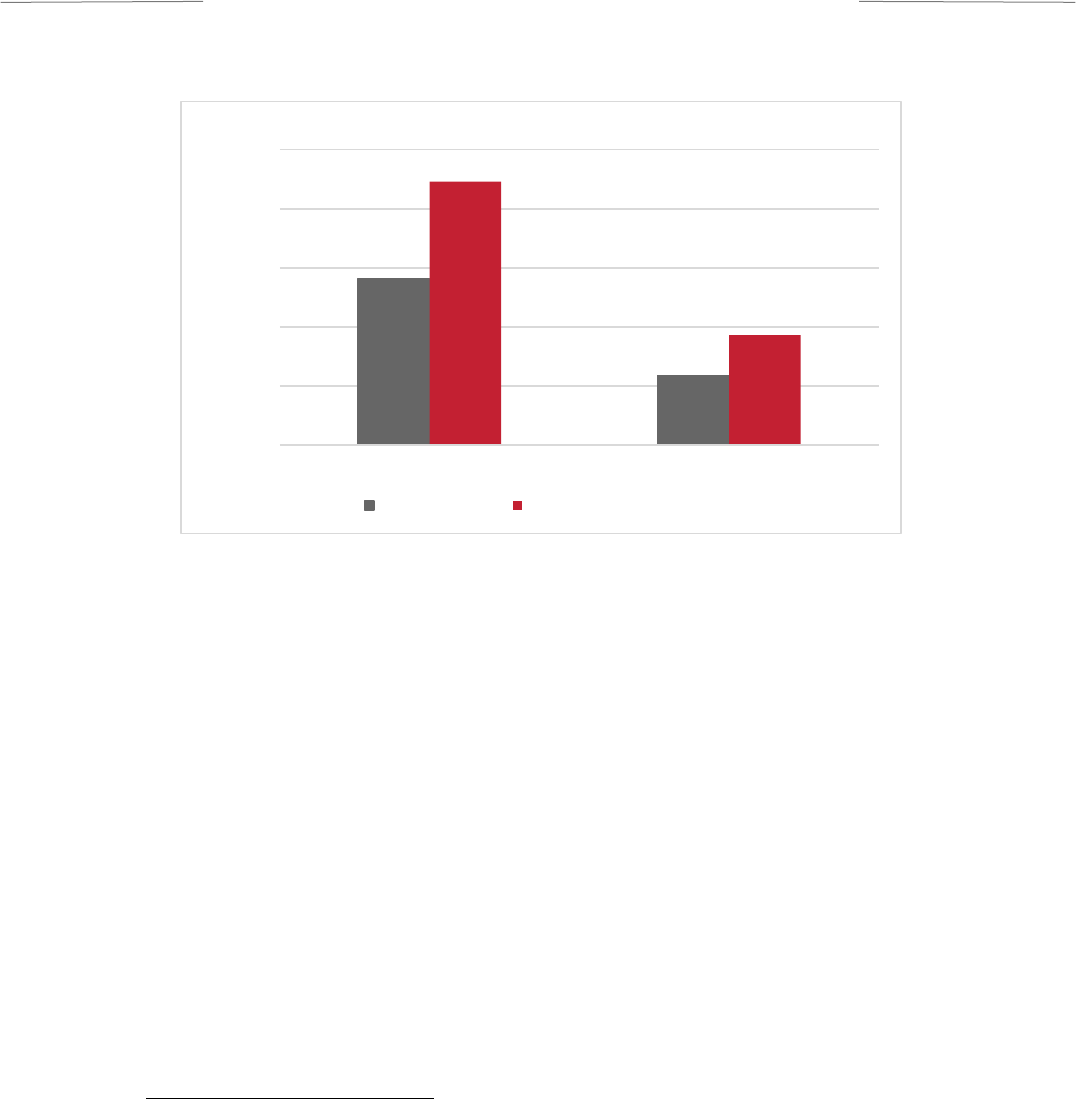
36
THE ECONOMIC RESEARCH CENTER AT THE BUCKEYE INSTITUTE
Figure 8: Diesel Fuel Price Increase
143
ESG-reporting requirements and carbon pricing obligations will cost farms nearly
$65,000 per year to offset or defray the cost of CO
2
emissions. The farm in this
scenario will pay $109,000 for nitrogen fertilizer this year, but the carbon cost of
the fertilizer will raise the price by $29,000, roughly 27 percent of the fertilizer’s
underlying value. (Figure 7.) The ERC’s findings corroborate a World Economic
Forum report that estimated that the price of fertilizer will need to rise 25 percent
to comply with net-zero emissions policies.
144
Carbon pricing also added $27,000
per year, a 40 percent premium, to the original $69,000 per year cost of drying
corn. (Figure 7.) Diesel fuel’s carbon emissions raised annual diesel expenses by
38 percent on till and no-till farms. (Figure 8.)
143
Graph produced using metrics from Energy consumption for row crop production, Iowa
State University, June 2012; Midwest No 2 Diesel Retail Prices, U.S. Energy Information
Administration (Last visited November 2, 2023); Kevin Rennert et al., “Comprehensive evidence
implies a higher social cost of CO
2
,” Nature, Volume 610, p. 687 – 692, September 1, 2022;
Monica Saavoss, Tom Capehart, William McBride, and Anne Effland, Trends in Production
Practices and Costs of the U.S. Corn Sector, U.S. Department of Agriculture Economic
Research Service, Economic Research Report Number 294, July 2021; and ERC calculations.
144
World Economic Forum, Net-Zero Industry Tracker 2022 Edition, July 2022.
58% Increase
58% Increase
$0
$5,000
$10,000
$15,000
$20,000
$25,000
Till No Till
Current Price Carbon Pricing Premium

37
THE ECONOMIC RESEARCH CENTER AT THE BUCKEYE INSTITUTE
Consumers
The average American household (two children, $70,000 annual income) spends
$8,320 per year on groceries. Carbon pricing will increase the average U.S. grocery
bill by $110 per month, $1,330 annually, or 15 percent.
145
Figure 9 shows the annual
increase in grocery prices when carbon emissions are included in the price.
Figure 9: Increase in Annual Grocery Bills
146
145
Calculated by dividing $1,330 by 12 months.
146
Table calculated using data sourced from the following: Table 1203, Consumer Expenditure
Surveys, United States Bureau of Labor Statistics, 2021; Carbon Footprint Factsheet, Center
for Sustainable Systems, University of Michigan, 2021.
$8,320, Current Annual
Grocery Bills
$9,650, 15% Increase In Annual Grocery
Bills Due to Carbon Pricing
$0 $2,000 $4,000 $6,000 $8,000 $10,000 $12,000
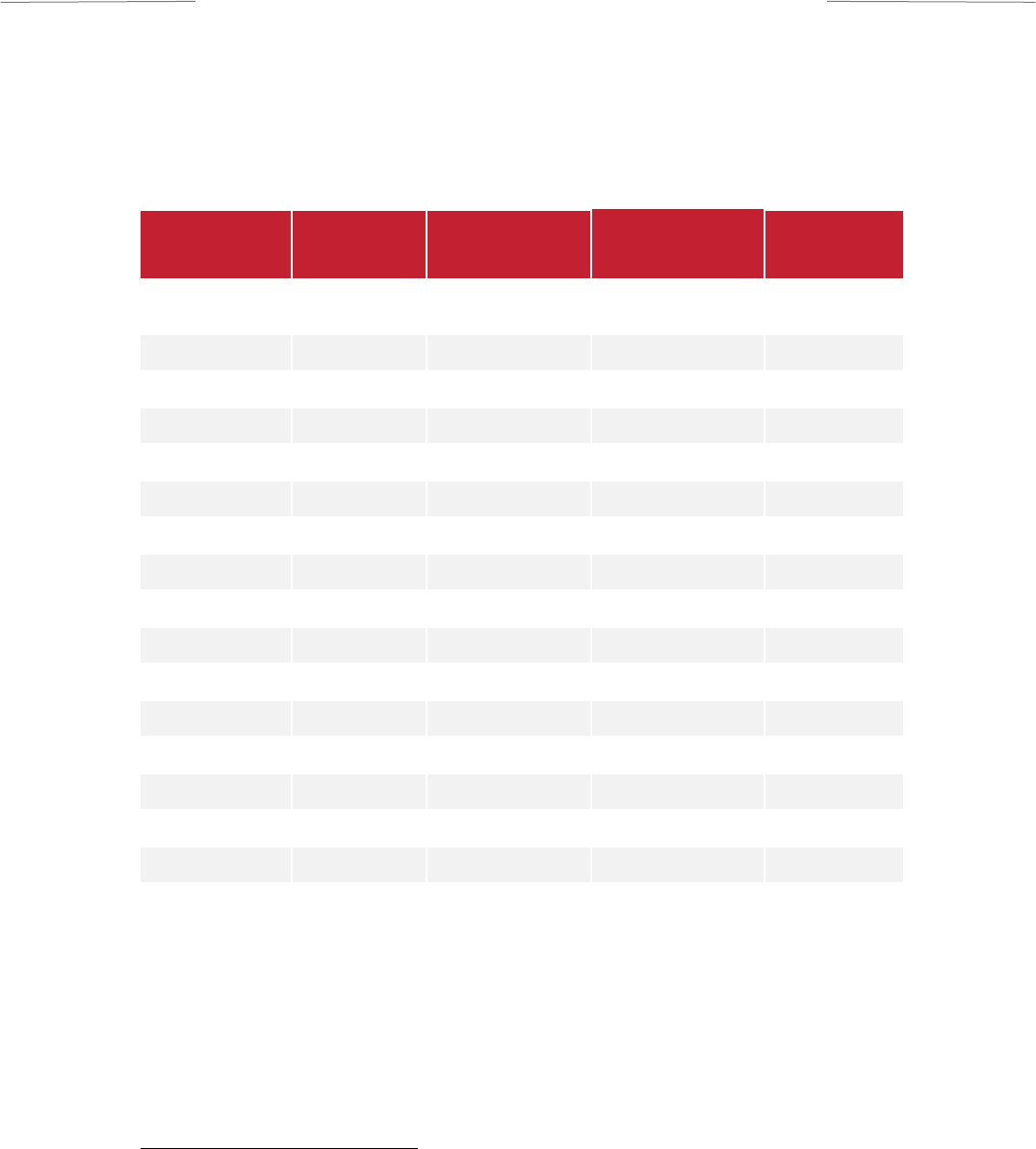
38
THE ECONOMIC RESEARCH CENTER AT THE BUCKEYE INSTITUTE
Table 2 denotes the price increases of individual U.S. groceries, which are more
extreme than in Europe (Table 1), primarily because the SCC used in the U.S. is
twice that of the EU ETS credits.
Table 2: Price Increases of U.S. Groceries
147
Item
Price Per
Lb.
Emission
Costs
Total Price Per
Lb.
Percent
Increase
American
Cheese
$4.73
$3.70
$8.43
78%
Bananas
$0.63
$0.37
$1.00
59%
Beef
$5.26
$3.70
$8.96
70%
Bread
$2.54
$0.19
$2.72
7%
Butter
$3.13
$0.74
$3.87
24%
Chicken
$1.90
$0.74
$2.64
39%
Coffee
$6.09
$0.82
$6.91
13%
Dozen Eggs
$2.04
$0.74
$2.78
36%
Flour
$0.57
$0.18
$0.75
32%
Milk
$3.93
$0.37
$4.30
9%
Oranges
$1.62
$0.04
$1.67
3%
Pork
$6.50
$1.85
$8.35
28%
Potatoes
$1.09
$0.24
$1.34
22%
Rice
$1.00
$0.56
$1.55
56%
Spaghetti
$1.40
$0.19
$1.59
13%
Strawberries
$2.61
$1.22
$3.83
47%
Sugar
$0.95
$0.41
$1.36
43%
147
Table calculated using data sourced from the following: Announcement of Class and
Component Prices, U.S. Department of Agriculture, November 1, 2023; Average Retail Food
and Energy Prices, U.S. City Average and West Region, U.S. Bureau of Labor Statistics (Last
visited November 2, 2023); Climate Hub, CarbonCloud (Last visited November 2, 2023).

39
THE ECONOMIC RESEARCH CENTER AT THE BUCKEYE INSTITUTE
RECOMMENDATIONS FOR AVOIDING
THE FAILURES OF NET-ZERO POLICIES
Americans cannot afford the extra cost that net-zero emissions policies will add to
their grocery bills, so they should oppose them at the federal, state, and local levels.
Withdraw from the Paris Climate Accords
President Biden recommitted America to the Paris Climate Accords and is unlikely
to reverse course—but the next U.S. president can and should. President Trump
withdrew from the accords after President Obama signed on, and the next
president can do the same in 2025. The next president can also pare back many of
the Biden administration’s European-inspired climate regulations on America’s
energy, chemical, and agricultural industries.
Revoke as much of the IRA’s Net-Zero Funding and Tax Credits as Possible
Paying for the IRA’s $369 so-called investments in renewable energy
148
and faulty
green technology like carbon capture and sequestration
149
came at the cost of
American economic growth. The IRA’s 15 percent minimum corporate tax
150
negated the positive impact of the Tax Cuts and Jobs Act of 2017’s corporate tax
reforms.
151
Despite rosy emissions predictions by the Biden administration’s
EPA,
152
modeling from BloombergNEF indicates that the IRA will fail to reach the
net-zero target.
153
In April 2023, House Republicans passed the Limit, Save, Grow
Act,
154
which pared back many of the credits and subsidies given to renewable
energy producers by the Inflation Reduction Act. The Congress’ Joint Committee
on Tax estimated that the Limit, Save, Grow Act would conserve over $515
148
Travis Fisher, The Inflation Reduction Act’s Energy Subsidies Are More Expensive
Than You Think, Cato Institute, September 5, 2023.
149
Comment on EPA’s Proposed Rule for New and Existing Fossil Fuel-Fired Power
Plants, The Buckeye Institute et al., August 8, 2023.
150
IRS issue interim guidance on new corporate alternative minimum tax, U.S.
Department of Treasury, December 27, 2022.
151
William McBride and Alex Durante, New Study Finds TCJA Strongly Boosted Corporate
Investment, Tax Foundation, October 31, 2023.
152
Inflation Reduction Act Overview, U.S. Environmental Protection Agency, January 2023.
153
Report Shows that Inflation Reduction Act Alone Won’t Set United States on Track
for Net Zero, BloombergNEF, August 2, 2023.
154
House Republicans Pass Limit, Save, Grow Act to Rein in Wasteful Spending and
Grow the Economy, Ways and Means Chairman Jason Smith Press Release, April 26, 2023.

40
THE ECONOMIC RESEARCH CENTER AT THE BUCKEYE INSTITUTE
billion.
155
But it does not go far enough. Congress should also repeal the 15 percent
corporate minimum tax and freeze IRA-directed funds thrown into the net-zero
money pit.
Congress Must Build Bipartisan Anti-ESG Coalition
Anti-ESG Republicans in Congress must court like-minded Democrats to resist
ESG-related mandates. In a deeply divided Congress, bipartisan collaboration will
be needed and remains possible. Democrats in both houses have broken party
ranks to oppose ESG before,
156
and Republicans will need to work with
Democrats
157
in energy-producing and agricultural states that will bear the brunt
of ESG mandates and other net-zero policies.
Proactive and Targeted ESG Bans
In March 2023, Congress passed a bill banning the Department of Labor that
would have greenlit retirement plans usage of ESG metrics to direct investment
decisions.
158
Although this measure was reactionary, Congress should proactively
resist the spread of ESG requirements by other federal agencies. For example,
Congress should consider barring the Farm Credit Administration
159
from
requiring farm lenders to adopt sustainability reporting and concomitant ESG
metrics.
Pass Laws Preventing Ideological ESG Investment and Lending
State level ESG policies should prevent state agencies, fund managers, insurers,
and lenders from using ESG criteria to guide investment decisions and set
insurance policies and premiums. Tennessee, Kansas, Arkansas, and Texas have
all passed anti-ESG legislation that prevent financial service providers from using
ESG criteria. By barring insurers, fiduciaries, and asset managers from using ESG
metrics, state legislatures can apply market pressures to stop pushing ESG-driven
decision-making. Tennessee’s SB 0955 required the Tennessee Treasurer to make
investment decisions based on financial factors and specifically barred ESG
metrics from being used when investing state funds.
160
Similarly, Kansas’ HB 2100
155
Joint Committee on Taxation, Estimated Revenue Effects of Division A, Title III of H.R.
2811, April 26, 2023.
156
Tori Otten, Every Democrat Who Voted With Republicans to Block a Rule on
Sustainable Investing, The New Republic, March 1, 2023.
157
Blue Dog PAC, Bluedogdems.com (Last visited November 20, 2023).
158
Barr’s Anti-ESG Legislation Sent to President Biden After Bill Signing Ceremony,
Congressman Andy Barr press release, March 9, 2023.
159
Farm Credit Administration, fca.gov (Last visited November 20, 2023).
160
Kaitlin Housler, Governor Lee Signs Bill Prohibiting ESG Investments in Tennessee,
The Tennessee Star, May 18, 2023; Public Funds and Financing SB 0955 HB 1286, Tennessee
General Assembly, 2023 (Last visited November 30, 2023).

41
THE ECONOMIC RESEARCH CENTER AT THE BUCKEYE INSTITUTE
prevented state agencies from using ESG criteria when awarding government
contracts. And it stopped financial advisors from using ESG metrics when making
investments for the state retirement system, obligating them to seek the highest
investment returns regardless of emission intensity.
161
Arkansas’ Act 411
established an ESG oversight board under the State Treasurer that logs all financial
service providers who use ESG metrics to discriminate against energy producers,
firearm manufacturers, or any other industry.
162
Once on the list, Act 411 allows
the treasurer to divest any public funds and retirement holdings held by the ESG
financial institution.
163
Texas Senate Bill 833 prevents insurance providers from
using “environmental, social, or governance models, scores, factors, [and]
standards” when offering policies and setting premiums.
164
States that have not
already done so should consider adopting the anti-ESG provisions in these bills.
And states that have adopted anti-ESG legislation should consider augmenting
those laws with anti-ESG measures used in other states.
Corporate and Shareholder Response to ESG Metrics
Corporate boards in industries that will be negatively impacted by ESG reporting
and other net-zero policies should inform shareholders about how ESG-reporting
requirements will affect operations and long-term shareholder value. Shareholders
can then use this information when voting on ESG metrics. Activist institutions
have stacked corporate boards with ESG advocates, but shareholders can vote
against ESG resolutions and hold board members accountable for failed ESG
policies and investment decisions.
165
In 2022, 1 out of 4 climate disclosure rules
passed shareholder votes.
166
U.S. shareholders must exercise their privilege to vote
against ill-advised corporate ESG resolutions. Investors who oppose ESG-based
policies can also vote directly with their dollars and purchase a stake in anti-ESG
funds and exchange-traded funds.
167
161
Conference Committee Report House Bill 2100, State of Kansas, 2023; Governor Laura
Kelly, Message from the Governor regarding House Bill 2100, State of Kansas, April 24,
2023.
162
House Bill 1307, State of Arkansas 94
th
General Assembly, 2023 (Last visited November 30,
2023).
163
House Bill 1307, State of Arkansas 94
th
General Assembly, 2023 (Last visited November 30,
2023).
164
Relating to Consideration by Insurers of Certain Prohibited Criteria for Ratemaking
Senate Bill 833, Texas State Legislature, September 1, 2023 (Last visited November 30, 2023).
165
Matteo Tonello, Shareholder Voting Trends (2018-2022), Harvard Law School Forum on
Corporate Governance, November 5, 2022.
166
Ibid.
167
Mahi Roy and Alyssa Stankiewicz, What’s Inside Anti-ESG Funds?, Morningstar, June 7,
2023.

42
THE ECONOMIC RESEARCH CENTER AT THE BUCKEYE INSTITUTE
Promote Good, Affordable Farming Practices at the Local Level
Every American farmer has the power to make a meaningful impact by practicing
proper farming methods that can maximize yields and help feed the nation. The
IRA set aside $18 billion for climate-smart agricultural practices: no-till and cover
crops.
168
But top-down solutions from Washington won’t work because they lack
the local and regional knowledge needed for successful farming. Farmers must
decouple farming practices from their purported climate benefits and use the
methods that are best for their farms, families, and produce. No-till farming and
cover crops can offer significant soil health, erosion control, and cost-saving
benefits for farmers.
169
But, studies suggest that the federal government may be
overselling its emission reduction benefits,
170
and both practices have significant
drawbacks if not deployed thoughtfully and carefully. Although no-till farming
may improve some farm conditions, most farms will not reap benefits for several
years while the soil rejuvenates,
171
which makes the practice a non-starter for
farmers who live on income from harvest to harvest. Cover cropping may offer
some modest emission reduction benefits, but a recent analysis out of Stanford
suggests that cover crops may also decrease corn and soybean yields.
172
At a
minimum, these studies caution against massive funding to expedite a slapdash
rollout of “climate-smart” farming. Local field days sponsored by land-grant
universities can help farmers learn how best to apply these practices in their
regions and improve their success rates on the farm.
168
Inflation Reduction Act Leaves Farmers and Traditional Conservation Programs
Behind, U.S. Senate Committee on Agriculture, Nutrition, & Forestry, September 14, 2023.
169
Garrett Duyck and Diane Petit, Seeing is Believing: Soil Health Practices and No-Till
Farming Transform Landscapes and Produce Nutritious Food, U.S. Department of
Agriculture, December 19, 2016.
170
Emma Bryce, No-till may not be the agricultural panacea we thought it was,
Anthropocene, August 5, 2022.
171
Frank Lessiter, 30 Years of Building Soil Health Undone with 1 Pass, Strip-Till Farmer,
November 17, 2022.
172
Rob Jordan, There’s room for improvement in a popular climate-smart agricultural
practice, Stanford-led study shows, Stanford News, November 8, 2022.

43
THE ECONOMIC RESEARCH CENTER AT THE BUCKEYE INSTITUTE
CONCLUSION
Government climate-control policies ensconced in the Paris Climate Accords, the
Inflation Reduction Act, and ESG-guided mandates carry a hefty price tag,
especially for U.S. farms and the American consumer. Europe has tested many of
these policies aggressively for years, and the results have been an unmitigated
failure. Energy prices across Europe have skyrocketed. Chemical companies have
been unable to compete globally and have looked for exit strategies to find more
profitable environs. Food prices have soared as farms have been battered by higher
input, insurance, and lending costs—and tried to pass those higher expenses on to
European consumers. Tariffs have targeted European industries that have looked
elsewhere to make their products more affordable. Despite these resounding
warnings from European counterparts, U.S. policymakers have recommitted
American industry to the same net-zero emissions standards and have imposed the
same kinds of costly mandates on farms and businesses that will ultimately reduce
food and energy supplies without achieving their intended benefits. Oil and gas
producers, chemical companies, and the American farm will likely shoulder the
heaviest compliance burden, but they will inevitably share the cost with U.S.
consumers as the government-induced high prices for fuel, fertilizer, and food
ripple across the economic pond. Misguided climate-control policies can and
should be resisted at every level. The next American president should again
withdraw from the Paris Climate Accords, Congress should muster bipartisan
support to challenge ESG mandates, state legislatures should ensure fair lending
and insurance practices for constituent industries, and shareholders must vote
against ESG investment practices and hold corporate leaders accountable for
pursuing failed ideological ends on the company dime. The full price of climate-
control policies and directives needs to be measured and understood, especially
the costs they will inflict on American farms and households.

44
THE ECONOMIC RESEARCH CENTER AT THE BUCKEYE INSTITUTE
ABOUT THE AUTHORS
Trevor W. Lewis is an economic research analyst with
the Economic Research Center at The Buckeye
Institute, where he works with a team of economic
experts to research economic and tax policies that will
help Ohio and other states implement policies to grow
and strengthen their economies.
Before joining The Buckeye Institute, Lewis interned
with the Cato Institute and Citizens Against
Government Waste. While at Cato, he worked under the direction of scholars at
the Herbert A. Stiefel Center for Trade Policy Studies, where he assisted trade
policy experts with their research. While at Citizens Against Government Waste,
Lewis researched spending bills, analyzed the impact of tax policies, and produced
several blogs highlighting wasteful government expenditure at the state and
federal levels.
Lewis graduated from Santa Clara University with a Bachelor of Science in
economics and a minor in mathematics. While at Santa Clara, he worked as a
teaching assistant for several international economics courses.

45
THE ECONOMIC RESEARCH CENTER AT THE BUCKEYE INSTITUTE
M. Ankith Reddy is an economic research analyst with
the Economic Research Center at The Buckeye
Institute, where he works with a team of experts to
research economic and tax policies that will help Ohio
and other states implement policies to grow and
strengthen their economies.
Before joining The Buckeye Institute, Reddy interned
at the Cato Institute, where he worked under the
direction of scholars at the Center for Monetary and Financial Alternatives, where
he assisted in research and data analysis. Reddy was also a visiting fellow at the
Political Economy Research Institute at Middle Tennessee State University, where
his ongoing research efforts include the role of government in water management
and the relationship between foreign aid and economic growth.
Reddy is a Ph.D. student in the Department of Finance and Economics at Middle
Tennessee State University, where his fields of specialty are public choice and
applied econometrics. His research focus includes energy, monetary, and tax
policy. Reddy graduated from Middle Tennessee State University with a master’s
degree in economics and earned his bachelor’s degree in economics and a minor in
mathematics from King University.
A native of Hyderabad, India, Reddy loves to game, play tennis competitively, and
visit libraries in his free time.
Net-Zero Climate-Control Policies Will Fail the Farm
Copyright © 2024 The Buckeye Institute. All rights reserved.
Portions of this work may be reproduced and/or translated for non-commercial purposes provided The
Buckeye Institute is acknowledged as the source of the material. Cover image credit:
iStock/valentinrussanov.

88 East Broad Street, Suite 1300
Columbus, Ohio 43215
(614) 224-4422
BuckeyeInstitute.org
